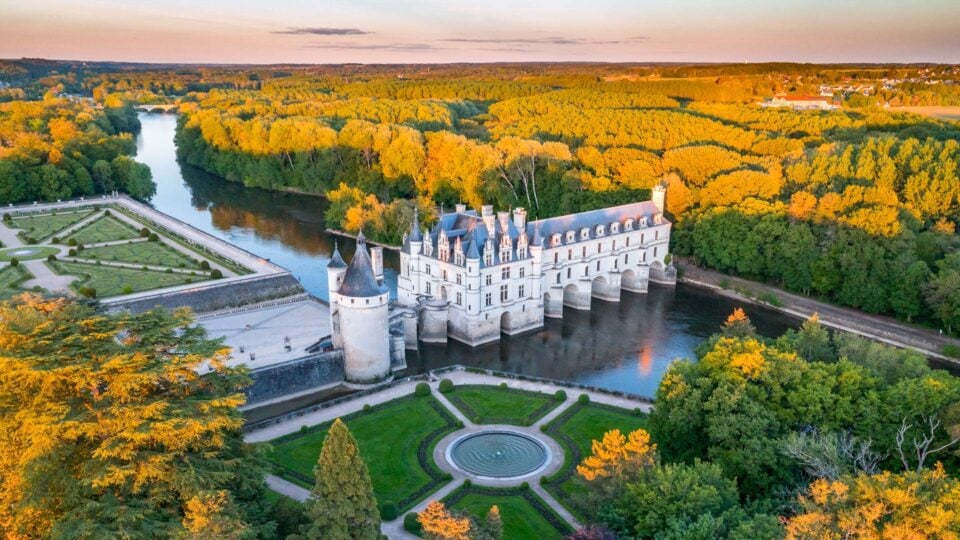The Castles of the Loire Valley are an integral part of the valley, listed as a UNESCO World Heritage site. How did it happen that about 50 fortresses are grouped in such a small area? The answer is simple: in the 9th-12th centuries, this area served as the border with the warlike Normans, so the feudal lords sought to protect their possessions by building forts. Fortresses were chosen on steep riverbanks and rocky cliffs. The river provided natural protection, and from the height, the valley was visible far and wide. The buildings were unattractive: their main purpose was to provide shelter for the garrison and the knight with his family. But in the 15th century, the situation changed drastically. The Italian campaigns showed the French nobles that life in the fortress could be not only safe but also quite comfortable. The feudal lords began to rebuild their estates: instead of unattractive houses, they built palaces and surrounded them with gardens and parks. The new chateaux were already built in the valley, blending harmoniously with the landscape.
Chambord

Built at the whim of Francis I. The king chose a place that, in his opinion, was most suitable for living: huge forest lands and endless fields. But the area that attracted the monarch turned out to be swampy, so it had to be drained first. But even after the work was completed, oak piles were used as the foundation; otherwise, water would have stood in the rooms. Chambord was a medieval long-term construction: it took 28 years to build. By the way, Francis I did not live to see his order fulfilled.
Chambord belonged to the royal family: the heirs of Francis lived there. Then, for a while, the building was abandoned. But then it began to be provided to various persons who arrived in France: Stanisław Leszczyński, Saint-Germain, and there was even a field hospital here. In the 1930s, it became state property and was opened to tourists. You can watch a beautiful music and light show here. And visiting the forest is allowed as part of a tour group in September-October.
Unfortunately, only a few of the 500 rooms have been reconstructed. They recreate the atmosphere of the Middle Ages. The main attraction is the staircase, made in the form of a double spiral. Presumably, it was designed by Leonardo da Vinci. In general, there are more than 70 intricate staircases here: researchers believe that this is how Francis I tried to avoid conflicts between his favorites, whom he received simultaneously.
Villandry
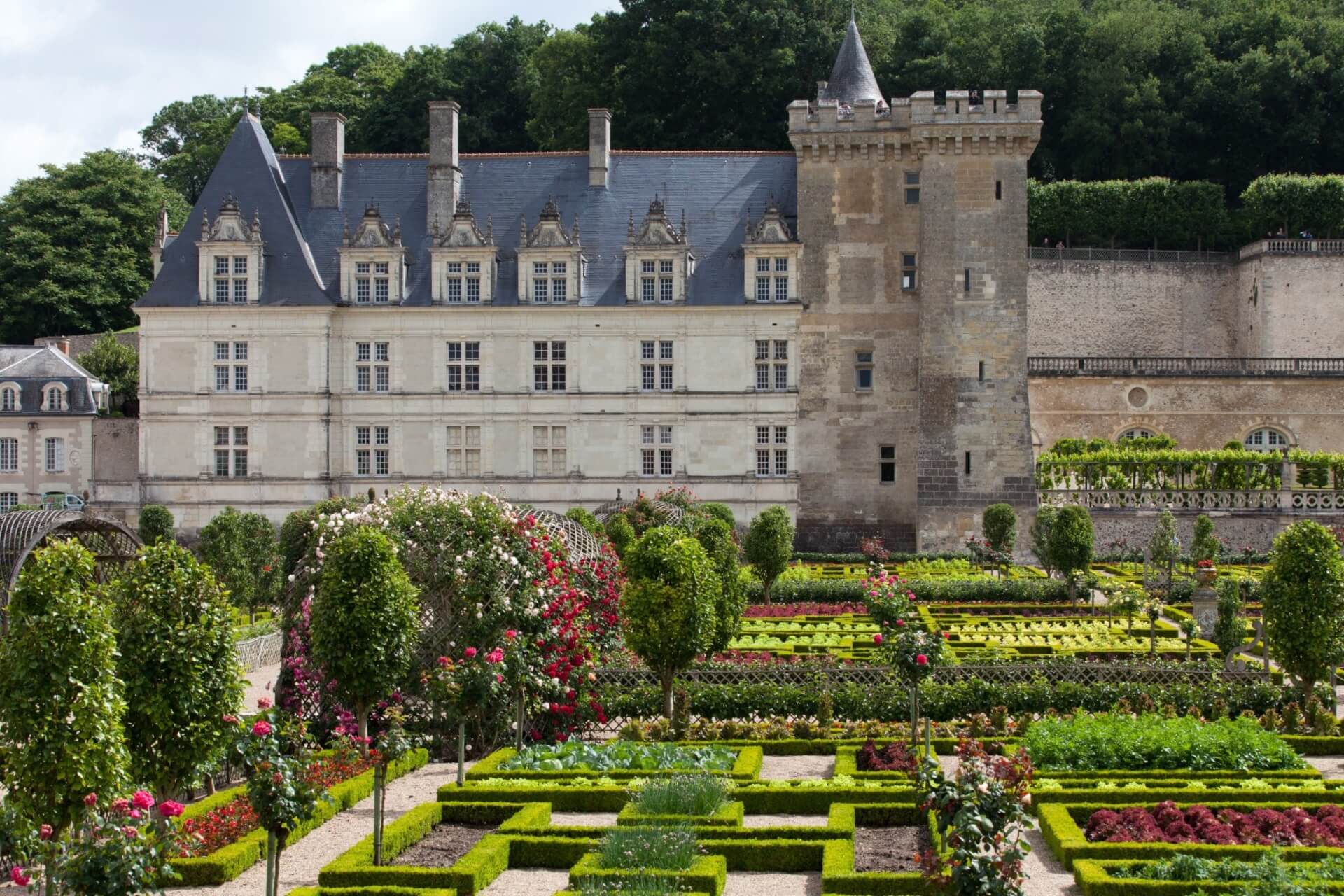
The palace has a complex history: the owners changed, and the appearance of the building transformed:
Initially, it was a well-fortified fort that could not be captured from the 13th to the 16th century. However, the building was rough, and the interiors were ideally suited for the needs of the garrison. It was in its inhospitable walls that the Treaty of Azay-le-Rideau was signed. In the mid-16th century, Villandry was inherited by Breton, the state secretary of Francis I. He supervised the construction of Chambord and Fontainebleau, so he wanted to turn his personal residence into an exquisite place. All unattractive buildings (except the central tower) were demolished, a new building was erected in the shape of a horseshoe, and the courtyard was decorated with arcaded galleries. At Breton’s wish, stone walls were replaced with hedges, and the park began to harmoniously complement the structure. In the mid-18th century, Villandry passed into the ownership of Marquis Castellan. He believed that the palace required radical changes. Villandry received new rooms (galleries, balconies), and the window openings were reduced. The building lived in this state for two centuries. But in the 20th century, Dr. Carvallo appealed to the public to restore Villandry’s historic appearance. The idea was supported: the shape of the windows was changed again, and the galleries were rebuilt. However, historians claim that the reconstruction did not affect a significant part of the park and the southern facade.
The interiors amaze with their chic and sophistication: the 18th-century atmosphere is authentically recreated here, and some of the interior items are genuine. You can enter with a tour, and from the tower, there is a stunning view, which is listed as a UNESCO World Heritage site.
Amboise
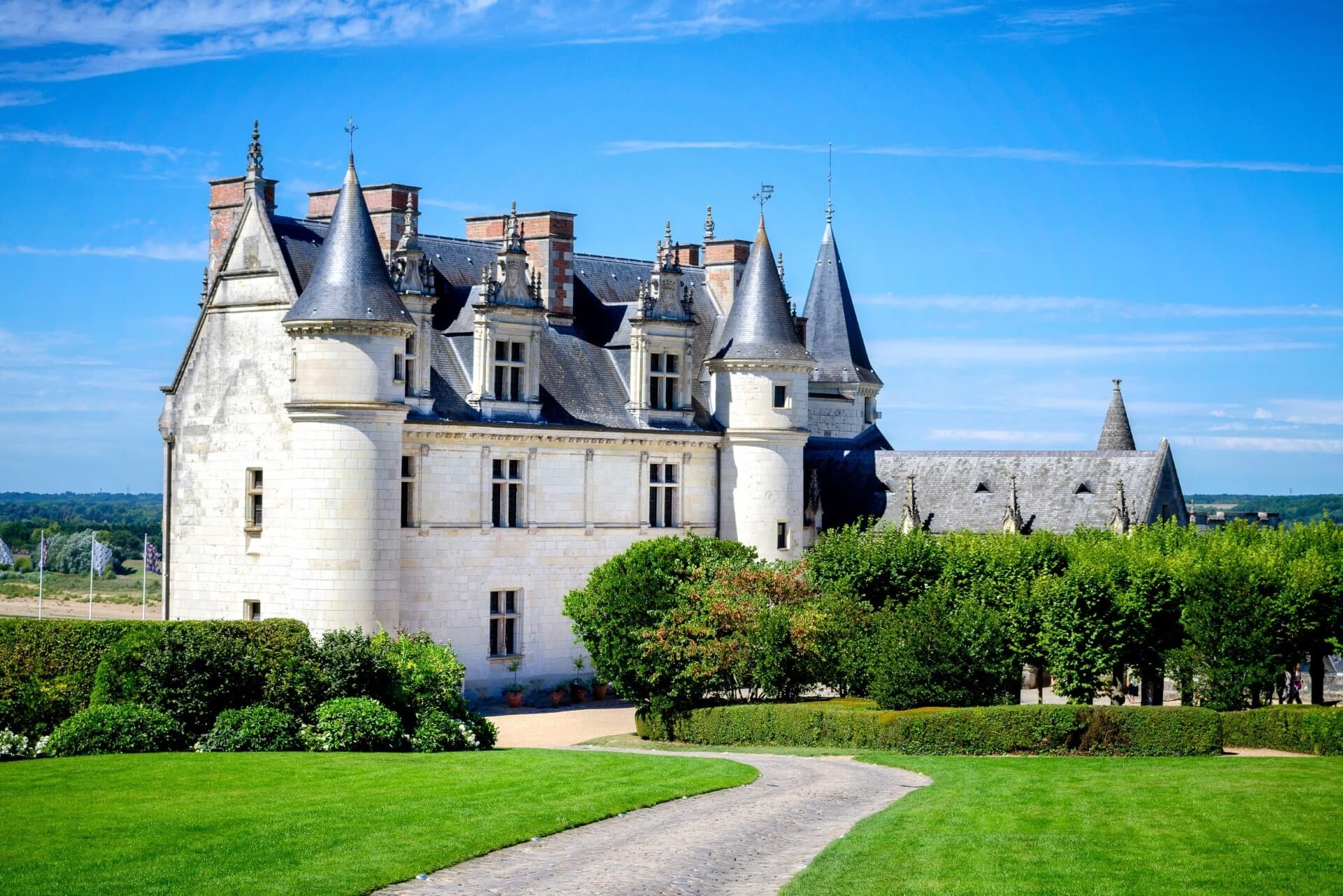
Initially served a defensive function: it was an impregnable fortress towering 40 meters above the Loire. Such a fortification could withstand a prolonged siege. In the 13th century, the fortress belonged to the Amboise family and later to the crown. The fortress was completely reconstructed when Charles VIII came to power. He loved luxury, so he decided to completely rebuild the estate. It was Charles VIII who came up with the idea to create the famous Italian gardens on the territory of the fortification.
Francis I spent his childhood in Amboise. Later, the monarch devoted much time to the palace and invited Leonardo da Vinci for technical solutions. Subsequently, the royal family left Amboise, and the palace was abandoned. During the French Revolution, a button factory was located here. At this time, Amboise almost perished: a member of parliament proposed to dismantle part of the fortress and sell the stones to cover the maintenance costs of the cumbersome structure.
The interiors perfectly convey the atmosphere of the Middle Ages. The collection of furniture from that period is exhibited here. The rooms are named after famous women who lived in its chambers at different times. Tourists eagerly visit the exhibition dedicated to Leonardo da Vinci.
Blois
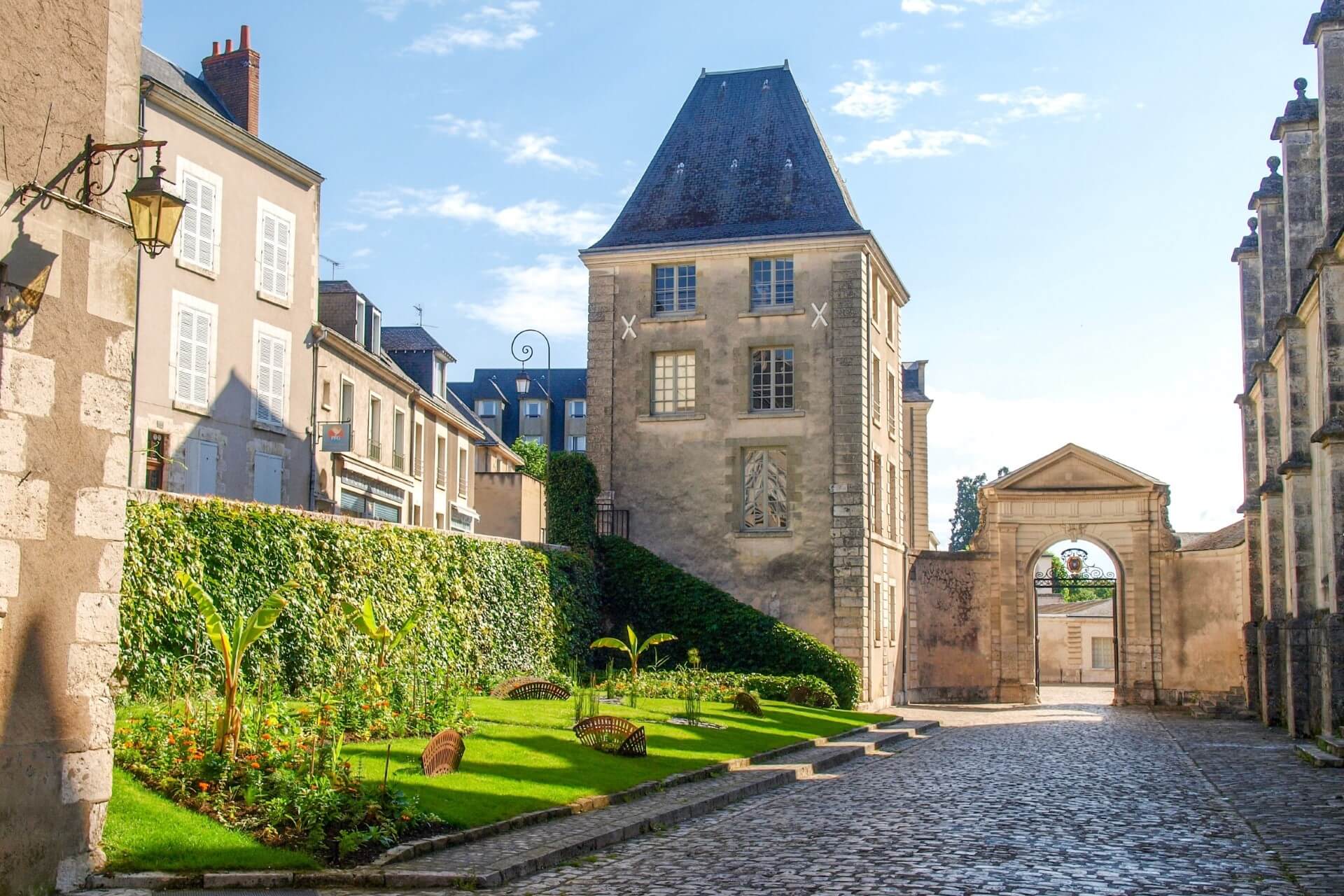
The history of Blois begins in the 9th century. It was then that the first citadel was built on the rock above the Loire. This was an absolutely impregnable structure: on one side, a high cliff, and on the other, a deep river. But large-scale construction began during the time of Louis of Orleans. Later, Charles of Orleans, who returned from English captivity and was a patron of artists and poets, lived in Blois. The castle was the birthplace of King Louis XII of France.
Louis XII made the city of his birth the capital and took up the arrangement of his personal residence. By this time, there was no longer a need for well-fortified fortresses, so the monarch directed all his efforts and resources to the construction of a new wing. The building naturally received the name of its creator. This building is significantly different from the other buildings of Blois: luxury and sophistication reign here. By the way, after receiving Archduke of Austria in his new residence, the far-sighted Louis XII prevented a military conflict with Austria. The monarch of the neighboring state was charmed by the courtesy and dazzled by the wealth of Blois.
Francis I also loved the palace. He built his own wing, on the facade of which he immortalized the motto: “I encourage good but hate and punish evil.” To ensure that the descendants remembered the lesson well, it was written 12 times.
Unfortunately, after Francis I left Blois, the residence was abandoned and began to deteriorate. For some time, the disgraced Gaston of Orleans lived here, who began the construction of his own wing. The construction of the building stopped fairly quickly.
Blois miraculously survived during the reign of Louis XVI: the king wished to sell the residence, and if no buyer was found, then destroy the fortress. Fortunately, the vassals dissuaded the king from barbarism: the monarch ordered the garrison to be placed in Blois.
The French Revolution completed the decline of the fortress. Only in the 18th century did the first reconstruction begin, which was sharply criticized by architects for adding non-existent elements. Today, Blois has been restored to its original form: it is an amazing monument that combines the features of several historical eras.
Chenonceau
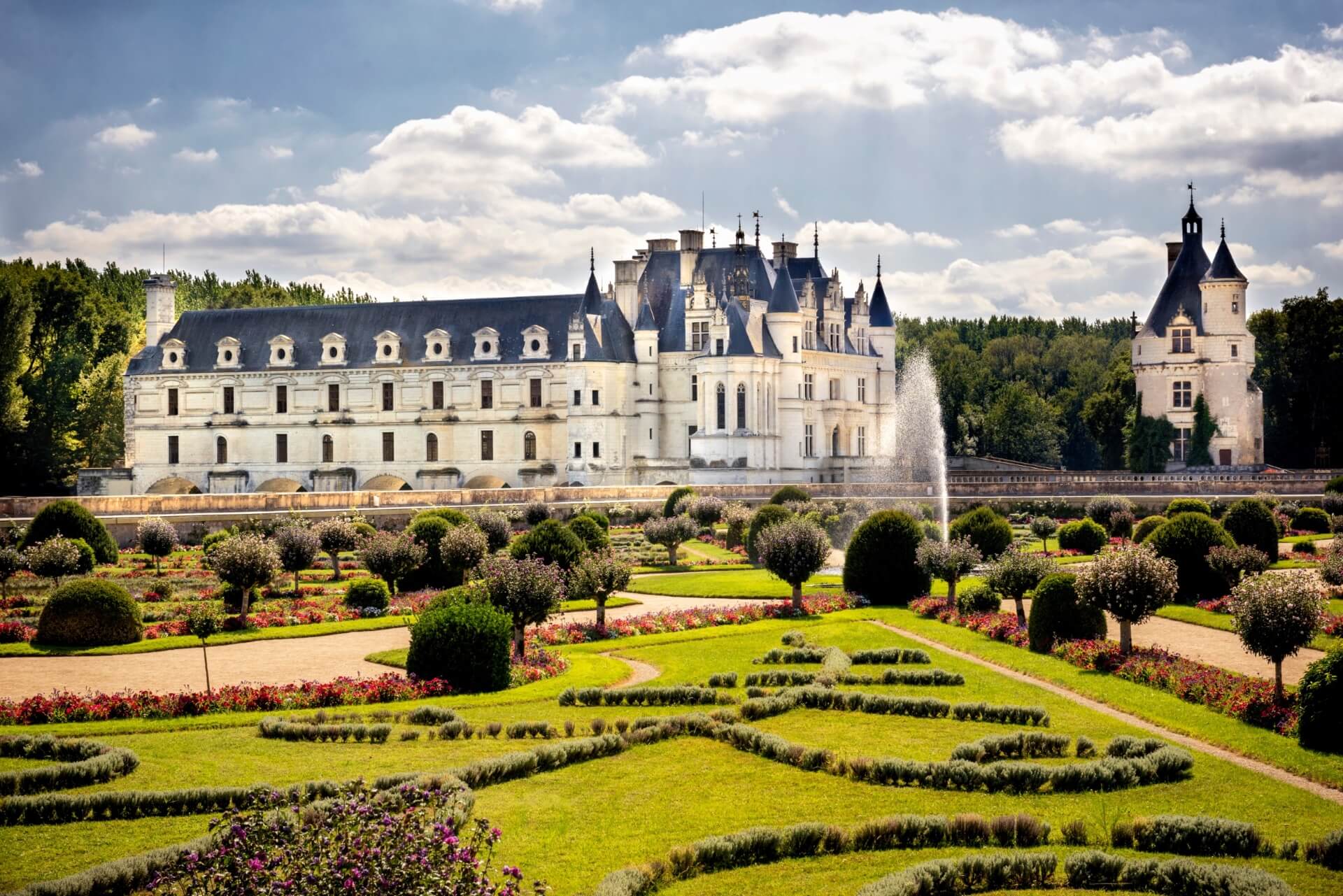
This castle is one of the few in France that is privately owned. However, the owners are happy to let tourists inside the building and onto the surrounding grounds. Historians call Chenonceau the women’s castle. And there is a logical explanation for this: famous women of different eras took an active part in its arrangement:
The wife of the castle’s owner, Catherine Boyer, at her husband’s behest, rebuilt the fortress, leaving only the central tower and the drawbridge. She also created a huge park around the new house. After the death of the Boyer couple, Francis I, who had a taste for beauty, took the estate from the heirs, declaring them traitors. His heir, Henry II, gave the royal residence to his favorite, Diane de Poitiers. The lady had exquisite taste: she took up the rearrangement of the garden and planted exotic plants. Diane built a stone bridge over the river Cher. After becoming a widow, Catherine de Medici considered it her duty to take the castle from her rival. The queen mother did little with landscape design but intuitively transformed the park: a stunningly beautiful gallery appeared on the bridge. Besides, Catherine created a second park that was supposed to overshadow the gardens of Diane de Poitiers. Later, Henry III’s wife lived in Chenonceau with the king. Gossip called her the white queen because widows’ mourning attire was white. After the white queen’s death, Chenonceau gradually fell into decay. The sad fate was changed by the purchase of the residence for his wife by Dupin. Madame Dupin turned the dreary building into a salon that Jean-Jacques Rousseau eagerly visited. Notably, Madame Dupin was kind to the servants, so during the French Revolution, Chenonceau was not looted or destroyed. It was not even confiscated. But the main merit in creating the appearance that Chenonceau has now belongs to Madame Pelouze. But this lady owned the estate for a short time: it was seized for debts.
The last owners were the Menier family. Menier’s descendants participated in the Resistance, and partisan meetings were held in the castle. This family still owns Chenonceau.
Bouteon
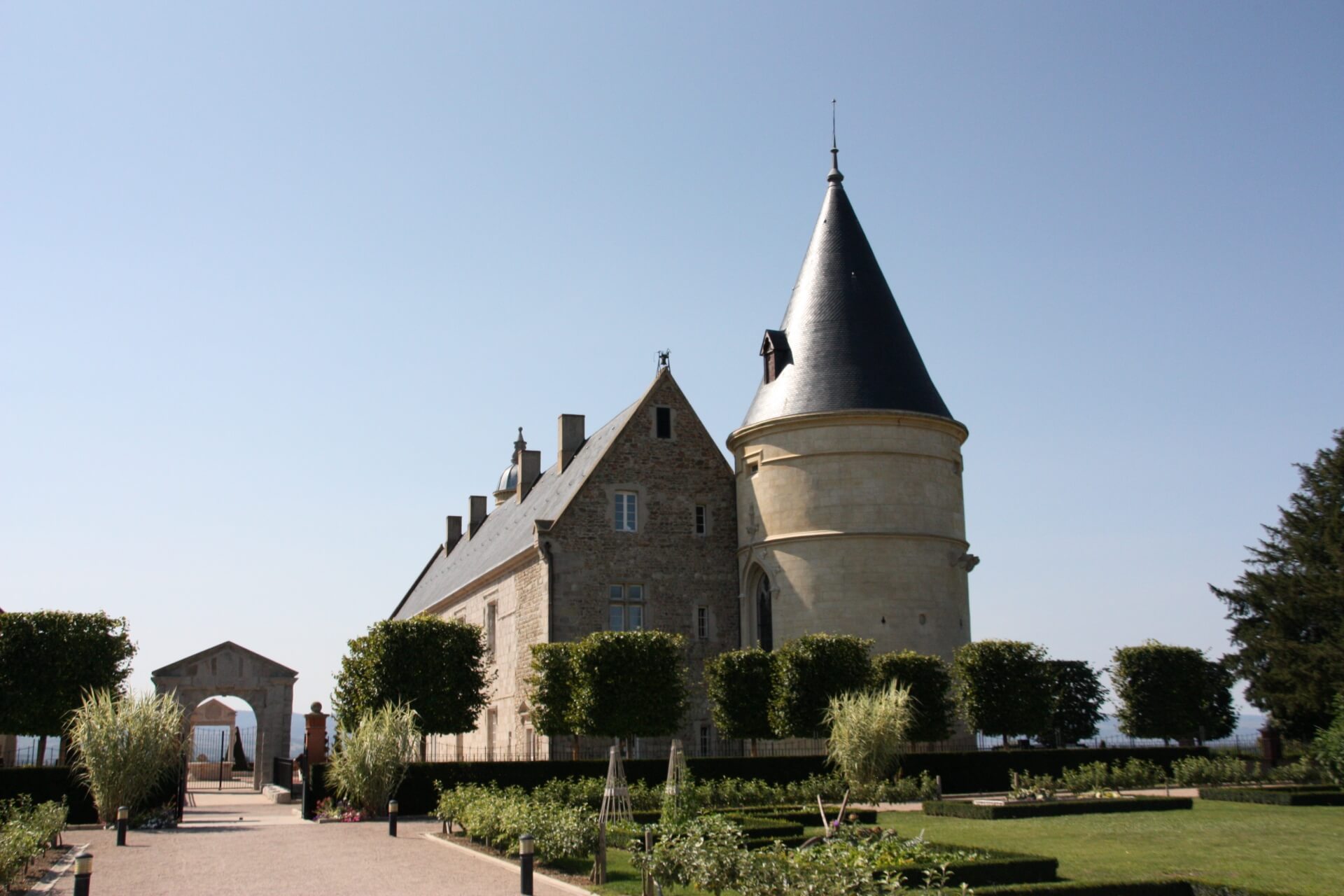
The first owners, the comital family du Forez, cared about the safety of their possessions, so they built an excellent fortification on the banks of the Loire. The building was rough but served its purpose excellently. In the 14th century, the building changed owners: first, it was the Fay family, then the Chalucet family. In the 15th century, Duke Jean of Bourbon bought the estate to present it to his favorite. During this period, the reconstruction of Bouteon began, according to the ladies’ needs.
The Duke’s son inherited the palace after his mother’s death. He continued to improve the fortress and built the north wing. But Mathieu de Bourbon had no children, so after his death, his cousin, Suzanne de Bourbon, became the owner. In the 18th century, the next owner of Bouteon, Claude Antoine, was killed during the siege of Lyon. The estate was fragmented: the fortress passed to Baron Montaim, and the land and forests were sold off in parts.
In the 19th century, Bouteon was acquired by a wealthy patron who gave the estate to his wife. Another reconstruction took place: new and old details were added. During World War II, Bouteon sheltered French refugees from Lorraine. In 1995, the municipality bought the palace. Bouteon was again reconstructed, this time aiming to return to its original appearance. Now it is a popular tourist spot. Besides, thematic exhibitions and musical events are held in Bouteon.
La Roche
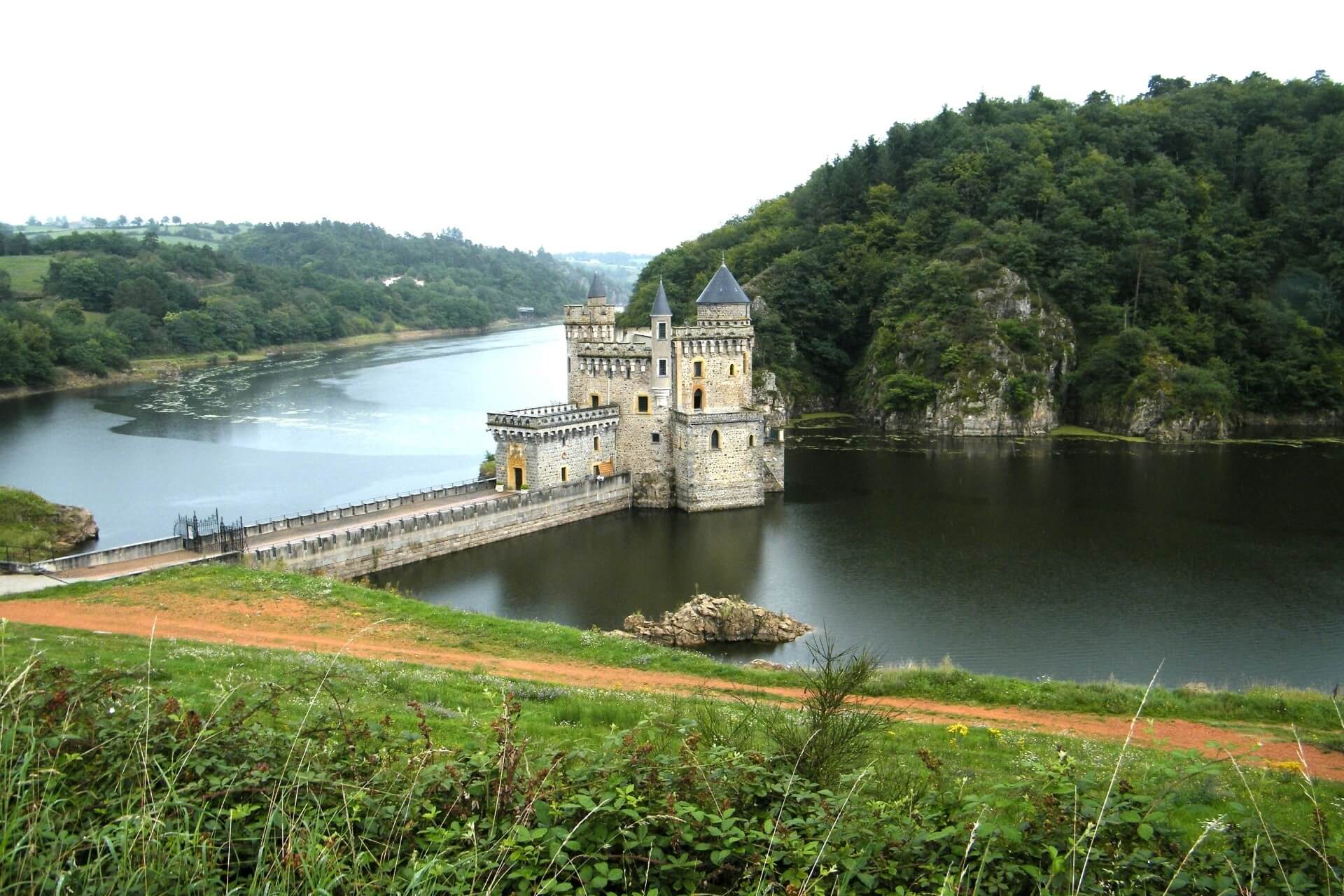
The first owners chose what they thought was a convenient place to control the Loire Valley. The rocky island was impregnable from land, and the towers of La Roche provided an excellent view of the county’s borders. But the downside of such a location was that La Roche was constantly destroyed by large (and not very large) floods. The owners spent enormous amounts of money to keep the building in order.
In the end, in the 17th century, another blow from the elements damaged the palace so badly that the owners abandoned the restoration. For a long time, La Roche stood abandoned: little remained of the Gothic facade. Rather, it was just a forgotten, neglected estate.
In the early 20th century, a native of Rouen bought the dreary building and began to reconstruct it. But the project to create a reservoir (1930) envisaged the complete flooding of the medieval chateau. The county’s public intervened, and the project was changed. But the threat of flooding remained.
Today, this is a picturesque place where many tourists come from spring to late autumn. Musical evenings, costume balls, and games for children and adults are held here. Medieval costumes are exhibited in the halls, and culinary and craft workshops are held.
The Palace of the Dukes of Nevers
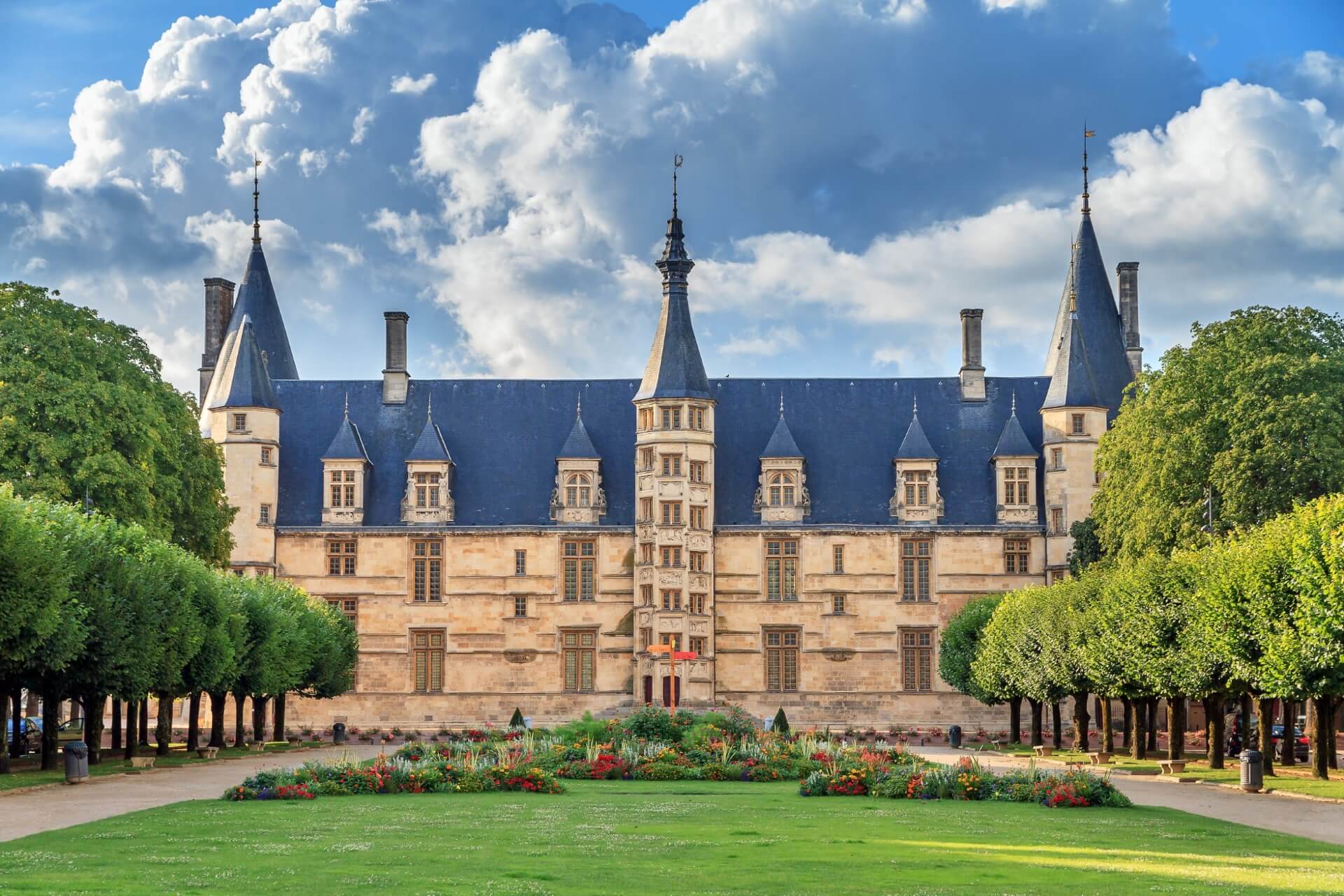
The building was erected at the end of the 15th century. The client was Count Jean de Clamency. But already in the mid-16th century, the new owner (François I of Cleves) made corrections to the original project. Then the next owner (Count Gonzaga) changed the appearance of the building:
- caryatids appeared
- pilasters were added
- windows were cut in the mansard of the 3rd floor
- bas-reliefs adorned the windows in the central tower
- new fireplaces adorned the interiors
But the northern part of the palace retained the original Gothic features. The most elegant room was the courtroom, personally designed by Cardinal Mazarin. Today, state institutions operate in the palace, there is a salon, and marriages are registered in the hall. In other rooms, medieval interiors have been recreated, and they can be viewed.
La Bussière
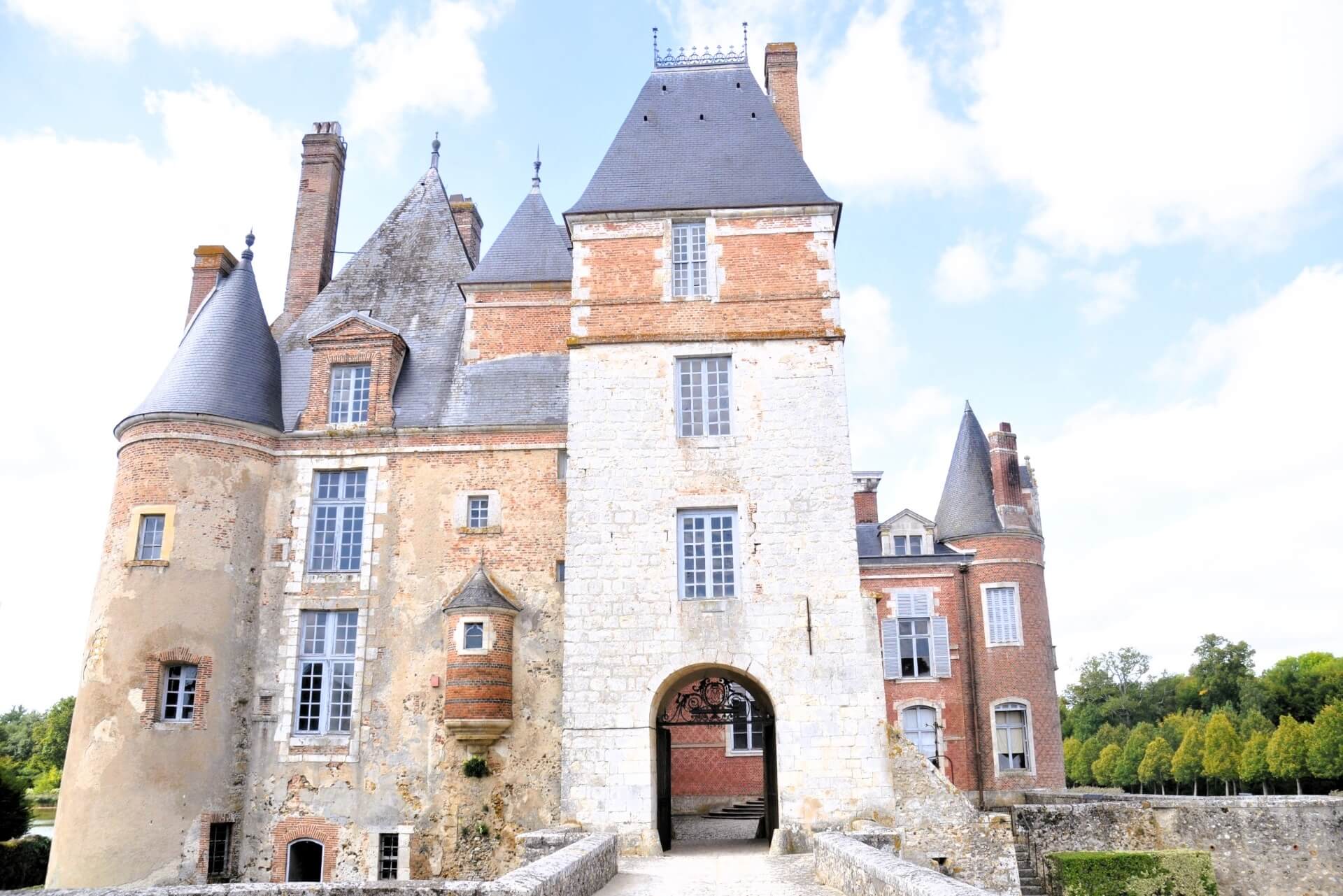
Unlike most Loire castles, La Bussière is privately owned. The fishing castle was built in the 12th century as a fortification but later converted into a pleasant and picturesque residence. The descendants of the comital family of Chasseval, the Chasseval couple, opened the reconstructed palace to tourists in 1962.
Guests are offered:
- medieval halls with recreated furnishings
- a basement with torture instruments (where knights subdued the rebellious)
- a labyrinth
- boats, nets, and tools for freshwater fishing
- a vegetable garden where vegetables eaten in 18th-century France are grown
- lush gardens where juicy fruits ripen
- a kitchen with medieval utensils
And all this is tied to the art of freshwater fishing. The Chasseval family’s project was so successful that La Bussière was included in the UNESCO list.
Gien
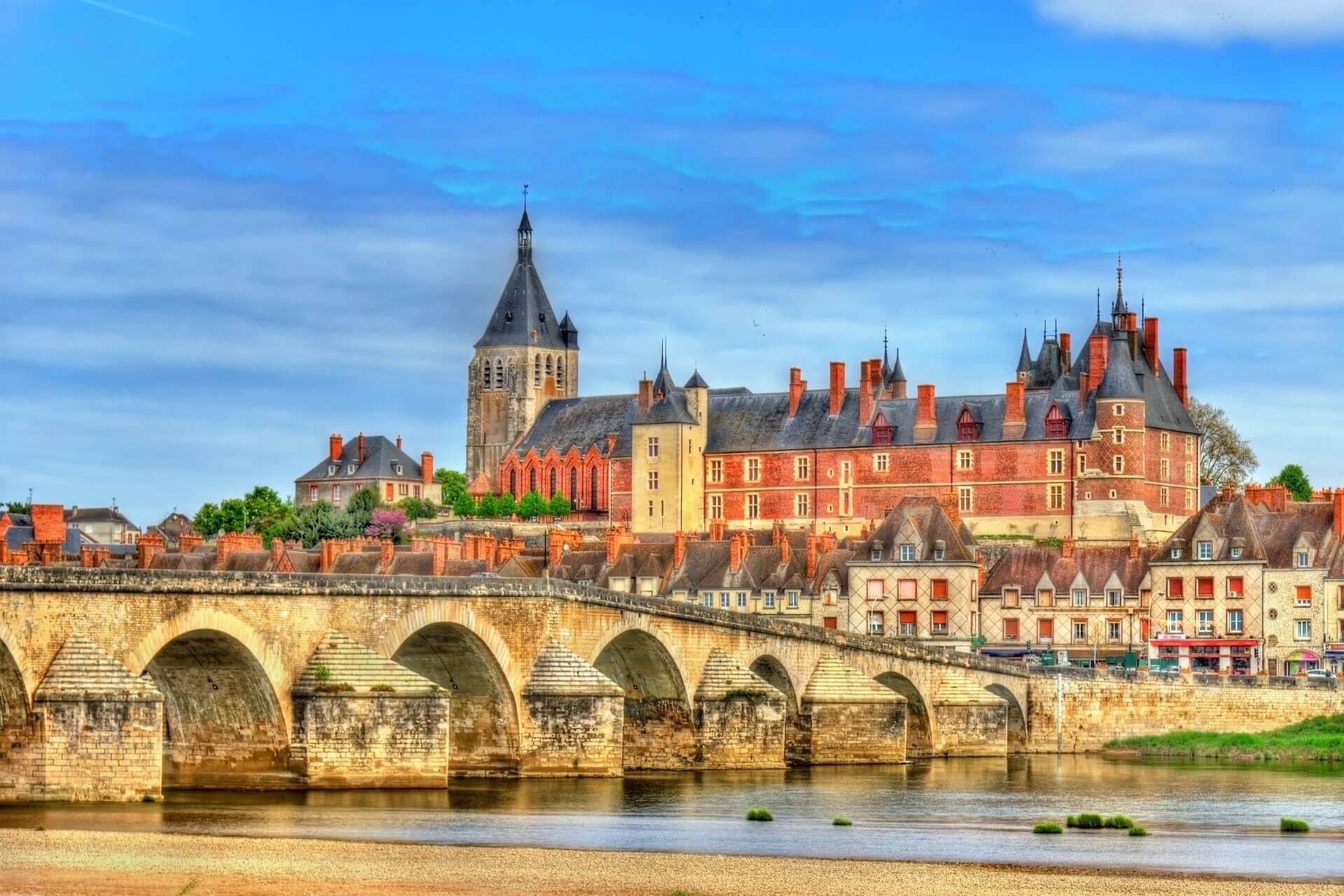
The residence belonged to the Gien family from the moment it was built until the French Revolution. Its original purpose was to protect the possessions from the barbarians.
The fortress has a rich history:
- Charles VII lived here briefly after Joan of Arc liberated the city
- one of the Gien counts presented the residence to his bride (Louis XI’s daughter Anne)
- Henry II and Catherine de Medici stayed here
- The Sun King and Anne of Austria hid from the Fronde in Gien
After the French Revolution, Gien became municipal. It housed the prefecture, court, and prison. In the 18th century, a new wing was added to the building. During World War II, Gien was partially destroyed. In 2012, the French government allocated funds for the palace’s reconstruction. The building was restored to its original form, and archaeological research was conducted on the territory. Since 1952, the International Hunting Museum has been located within its walls. It occupies all the rooms, and the extensive exhibition consists of more than 15,000 items.
Sully-sur-Loire
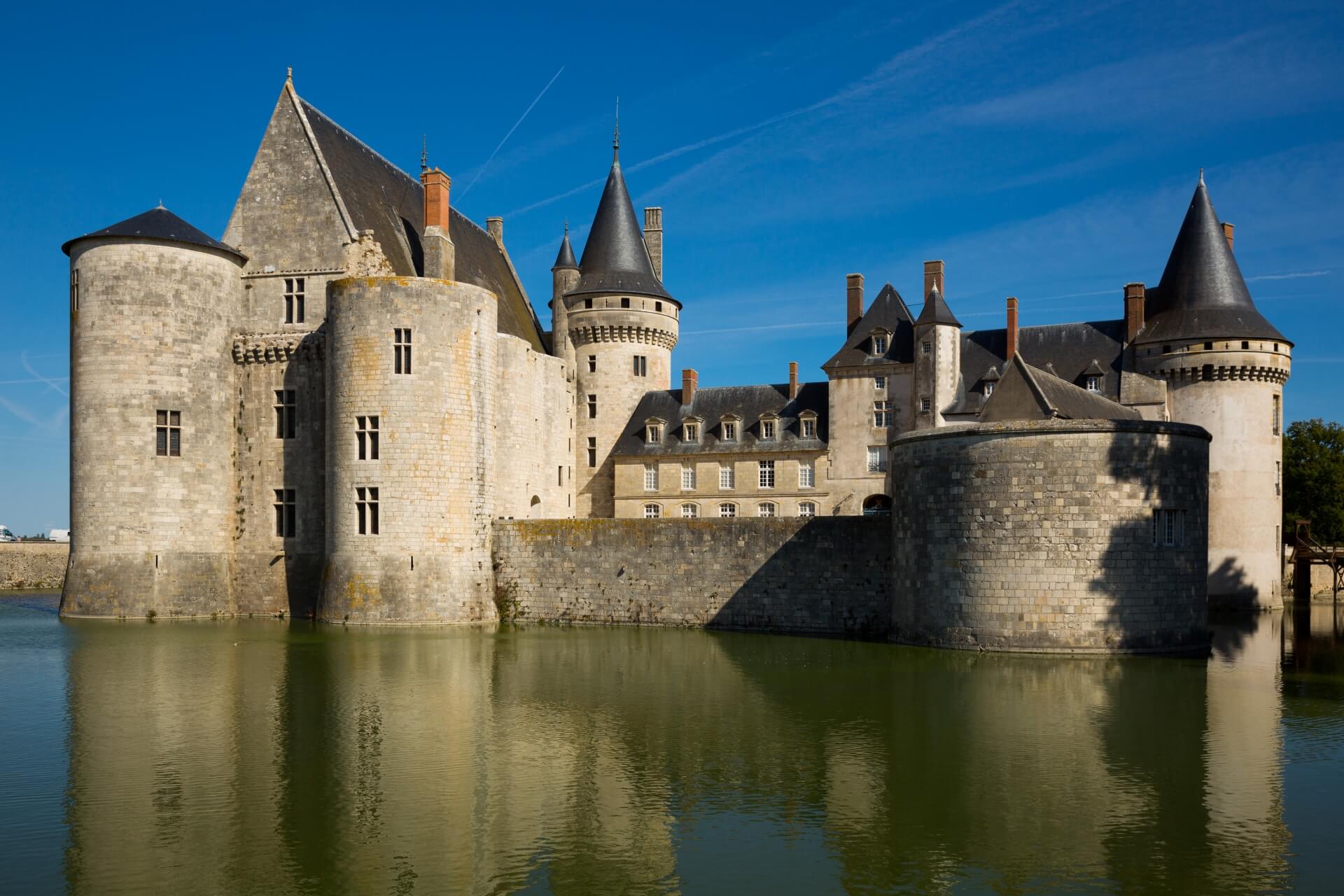
This fortress was built in the 12th century by the Sully family to control the bridge over the Loire. But in the 15th century, the crossing was destroyed, and the fort remained. The owners gradually adapted it for their own living:
- in the 16th century, Sully-sur-Loire received a new wing
- in the 17th century, the building was completely rebuilt (in accordance with the time, the building acquired Renaissance architectural features)
- in the 18th century, the ensemble was logically completed: old and new buildings were united by a building oriented from north to south
The impregnable Sully-sur-Loire protected those in danger: in the 17th century, the young Sun King hid from the Fronde here, and in the 18th century, Voltaire. Sully-sur-Loire almost perished several times: it burned heavily at the beginning of the 20th century, and during World War II, its buildings were partially destroyed by German shells. The Dukes of Sully owned the fortress until 1962, after which the Loire department acquired the building. Sully-sur-Loire was reconstructed and turned into a tourist attraction.
The annual International Classical Music Festival is held at the center. Besides, the rooms house an exhibition dedicated to the feudal way of life. The architectural ensemble is also interesting: two complexes are located on different territories, surrounded by a common channel. This moat is part of a system that protects the buildings from possible floods. Gardens designed by Duke Bethune are located on the territory.
Meung-sur-Loire
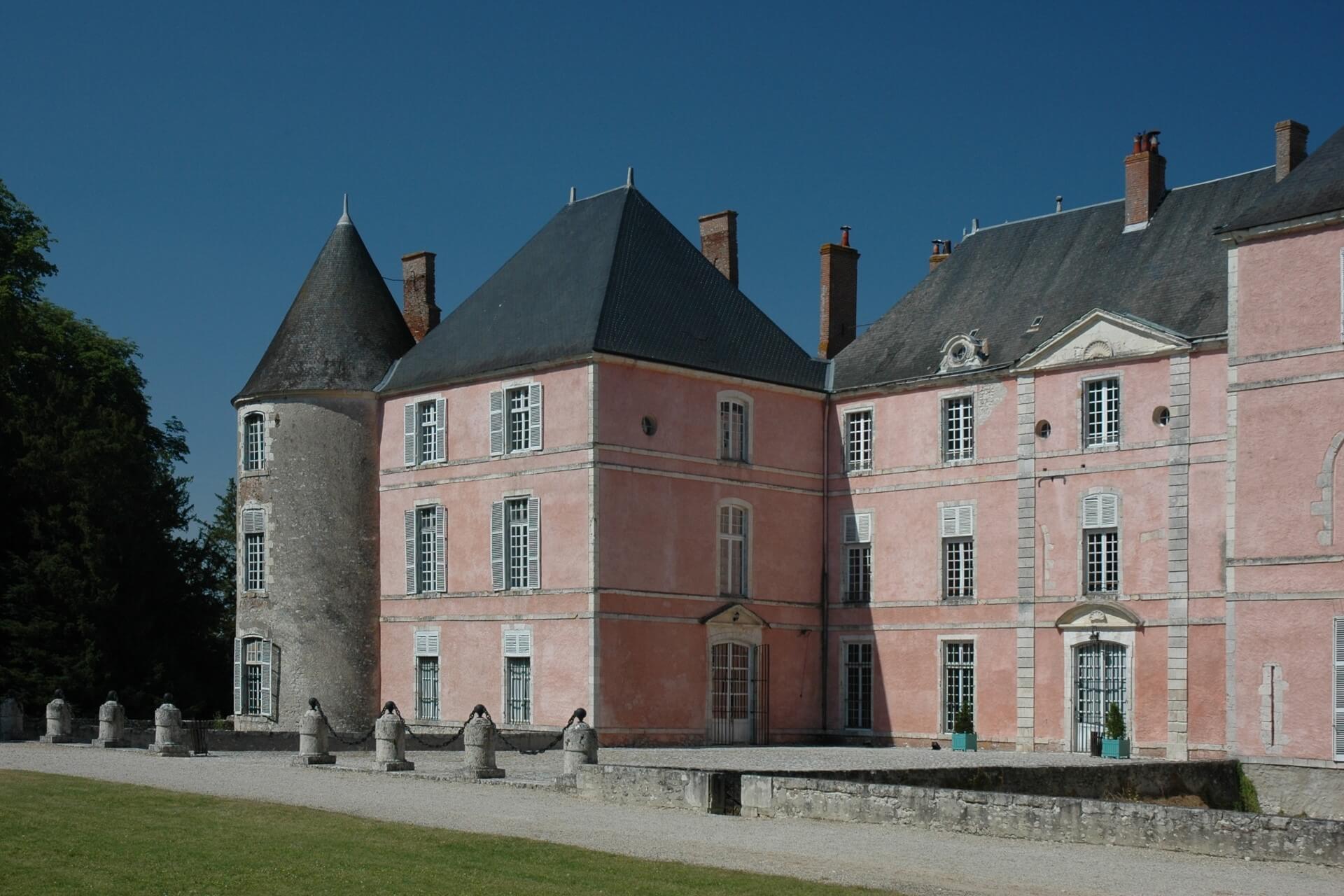
It is unusual that this fortress was built in the 12th century by order of the Bishop of Orleans. The goal was the same: to protect the church’s lands and the adjacent monastery of Saint Liphard from enemies. Initially, the fortress had two watchtowers with loopholes, crowning an unattractive square-profile building. But subsequent bishops paid due attention to the building: it expanded, towers, a guardhouse, cellars, and a drawbridge were added. However, after some time, the bridge was replaced with an entrance tower.
Meung-sur-Loire was the official residence of the Bishops of Orleans, so Francis I, Charles VII, and Louis XI were received here. The fortress was in a good location: its small garrison fully controlled the river valley. Therefore, during the Hundred Years’ War, the English captured Meung-sur-Loire, making the fortress completely impregnable.
After Joan of Arc recaptured Meung-sur-Loire from the English, a prison was set up in the fortress. Prisoners awaited trial by bishops or the king. The most famous “guest” of the fortress was the poet and criminal François Villon. Until the French Revolution, Meung-sur-Loire was owned by the Bishops of Orleans. Then a banker bought the palace. The complex belongs to him to this day, but it is open to visitors. Currently, restoration is underway, and access is allowed to 30 out of 131 rooms.
Cheverny
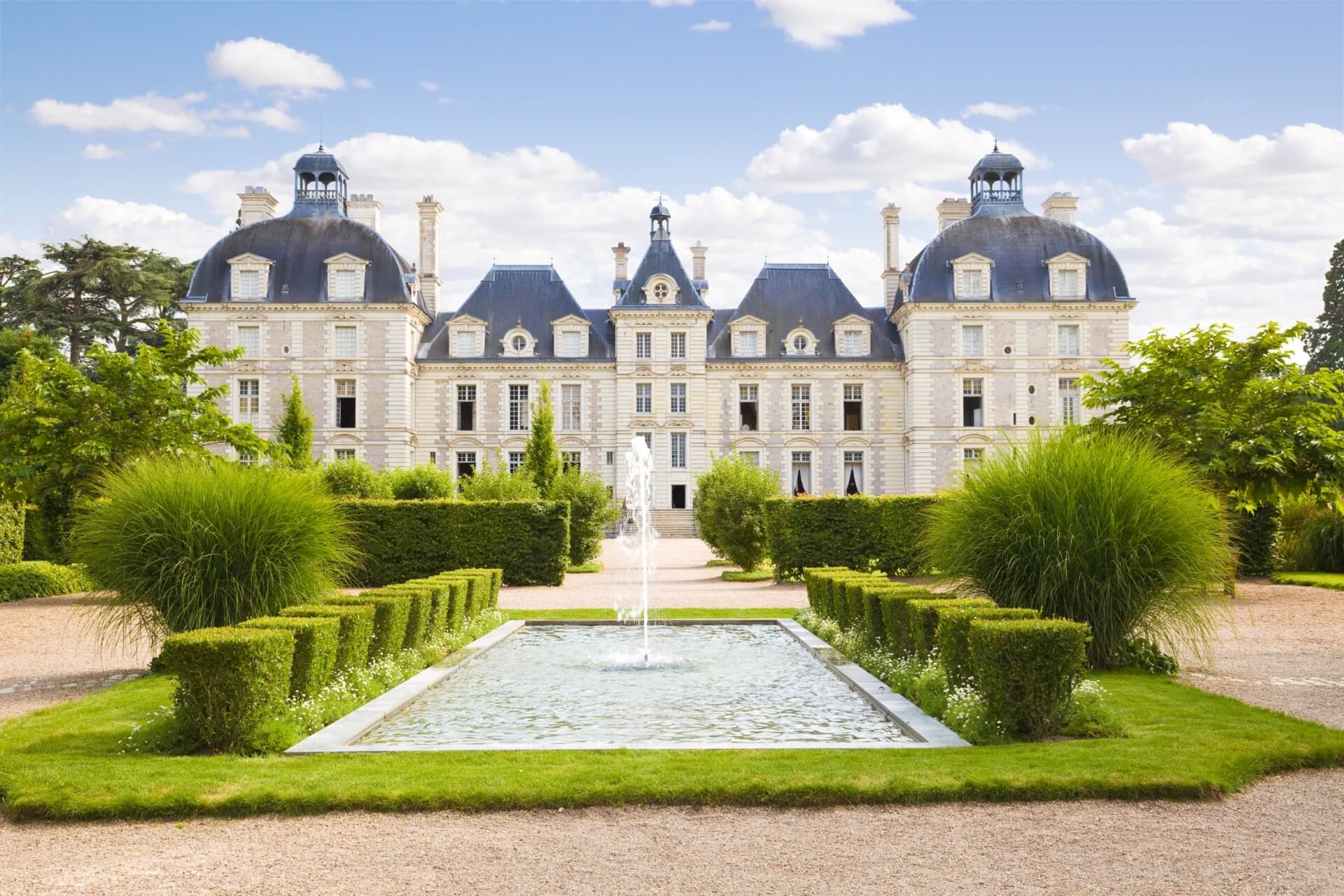
In the history of Cheverny, there are many unusual moments:
The fortress has belonged to the same Guro family from the moment it was built to the present day. The period of less than a year when the estate was in the hands of outsiders can be excluded. Henry II confiscated Cheverny from Guro, accusing the vassal of treason. And he gave the fortress to Diane de Poitiers. The lady was offended, considering the unpresentable building unworthy of her person. A few months later, she sold the estate to the Guro family. What a miraculous return! The French Revolution and subsequent wars did not cause significant damage to the estate. Therefore, the authentic interiors and furnishings of the mansion were preserved. Cheverny opened its doors to guests in 1922. Despite being privately owned, it became the first tourist attraction among the Loire castles.
The first owner of the fortification, Jacques Guro, decided to protect himself and his possessions. To do this, he built a fortress on the site of an ordinary mill. The mill was transformed into a building surrounded by walls bristling with loopholes. For complete safety, a deep moat was dug around it and filled with water. Such a fortification allowed repelling a sudden attack and, if necessary, withstanding a prolonged siege. But no one attacked Guro, and soon the descendants of the valiant knight began to rebuild the unassuming dwelling.
All the original buildings were demolished: instead of walls and towers, utility rooms were built. Local limestone was used for the central buildings. It has a unique feature: over time, it becomes lighter. Therefore, today tourists call Cheverny the dazzling palace. Despite the availability of funds, the work progressed slowly: Henry and Marguerite Guro died of old age, not seeing the end of the construction. However, Cheverny was designed by Bougier, who also created Chambord and Blois.
Today, tourists can see the armory, dining room, trophy room, and living rooms. A significant attraction is the “dog soup” show. Cheverny has a kennel where more than 60 purebred animals live. Many tourists gather daily to watch their feeding.
Beauregard

The original fortification was built in the 15th century by Count Dulce. Subsequently, the fortress was owned by the uncle of Francis I, but he did not make significant contributions to the transformation of the chateau. The reconstruction of the fortress was undertaken by Jean de Thier, who bought it in 1545. De Thier erected new rooms, skillfully combining them with the existing ones. Unfortunately, the name of the architect who brought de Thier’s ideas to life is unknown. The interiors were created by court artists and sculptors: the financier of Henry II could afford such luxury.
The estate was adorned with a garden on the south side, where exotic plants bloomed and bore fruit. The park covers an area of 70 hectares. Today, the remains of a 15th-century chapel can be seen here. The next owner of the chateau, Paul Ardier, undertook a major reconstruction of the building: he added symmetrical wings instead of the old buildings. He also founded a portrait gallery. All the paintings are copies of artworks by famous artists depicting French statesmen.
In 1864, Prosper Mérimée called for Beauregard to be recognized as a cultural heritage site in France. Today, the chateau is owned by the du Pavillon family. Beauregard’s pride is the red room. All its details are made of redwood. Tourists eagerly visit the portrait gallery, which features portraits of more than 300 kings and statesmen of France.
Chaumont-sur-Loire
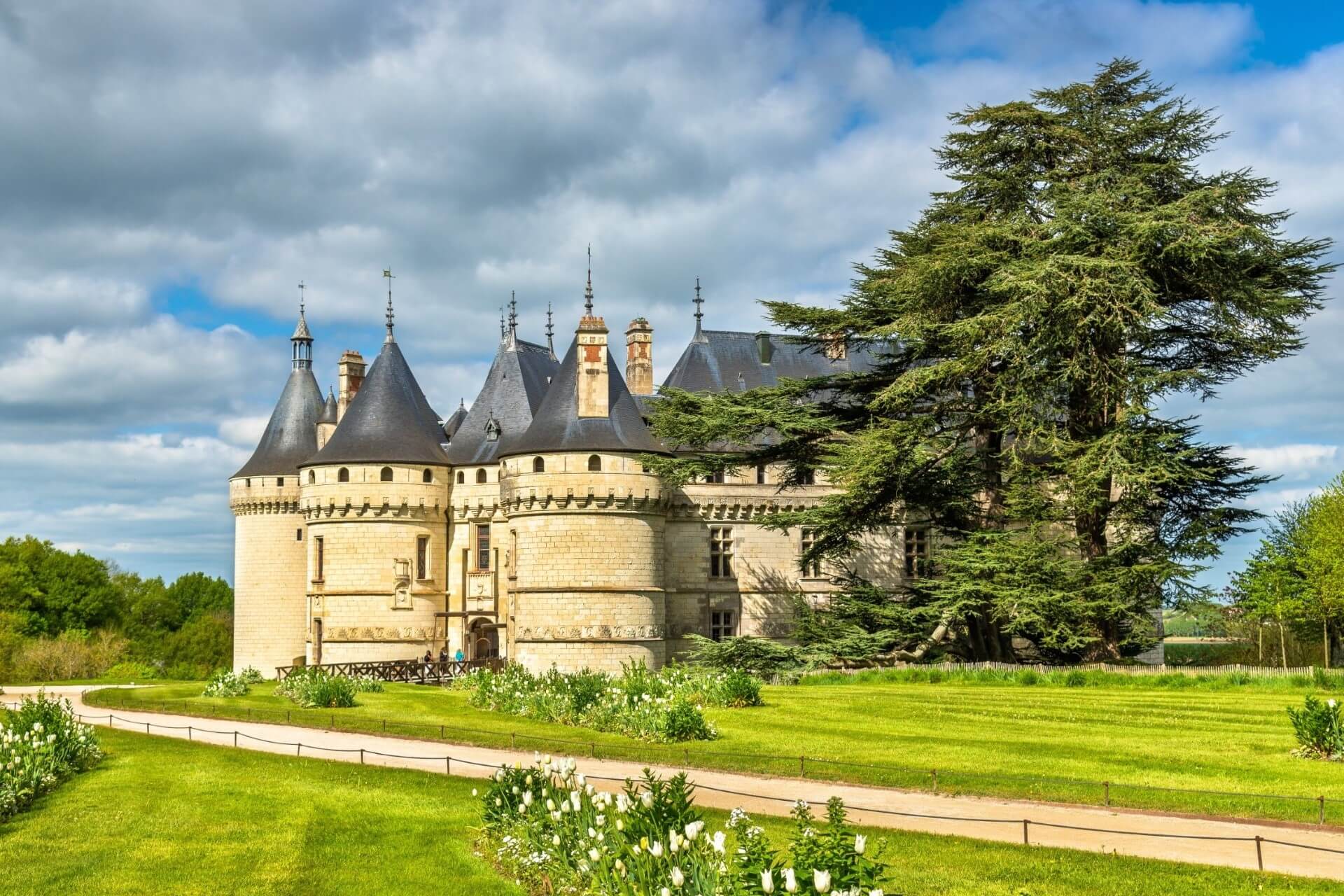
The first wooden fortress was built by Count de Blois to protect the lands from attacks by the aggressive Count of Anjou. Soon the chateau was bought by Count d’Amboise: his family owned the estate for almost five centuries. Louis XI accused d’Amboise of treason, so he ordered the family residence to be destroyed. But there is no evil without good: the d’Amboise family rebuilt the chateau, but now in stone. The construction began with the western wing, which looks the most impregnable. Three generations of d’Amboise worked on the restoration of the fortress, so the strict style acquired some elegance.
In the 16th century, Chaumont-sur-Loire changed owners again: it became the property of Catherine de Medici. The queen spent a lot of time in the chateau, inviting astrologers here: an observatory was even organized for them in the tower. Catherine’s collection of tapestries, which she was a connoisseur and lover of, has been preserved.
After the death of Henry II, Catherine de Medici decided to take revenge on Diane de Poitiers: she forced the former favorite to exchange Chenonceau for Chaumont-sur-Loire. Diane spent her remaining years in the new residence. Her bedroom, easily recognizable by its coat of arms and monogram, has been preserved.
The situation changed when the residence was bought by the d’Aramon family. The count hired architect Morandière for the restoration of the building. A hundred years later, Chaumont-sur-Loire became state property. It was restored again and turned into a tourist center. The annual International Garden and Landscape Art Festival is held here.
Montgeoffroy
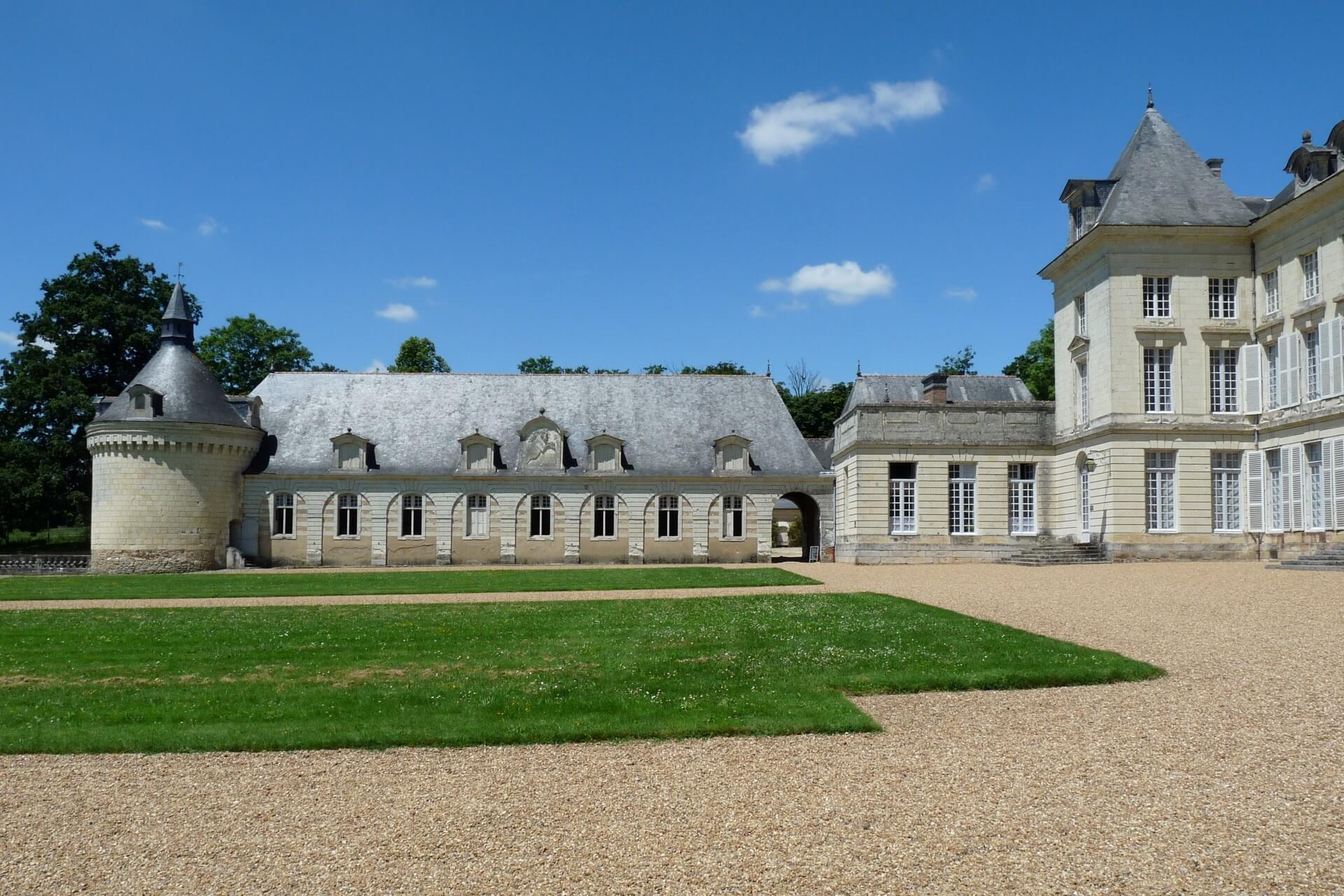
This chateau has fully recreated 18th-century interiors. Fate was kind to Montgeoffroy:
- the estate belongs to one family, the de Contades
- the building survived the plundering of the French Revolution
- the modern owners decided to preserve the interiors as they were under the first owner
Marshal of France, Marquis de Contade, built the chateau at the end of the 18th century. Local sandstone, which has an interesting property: it becomes lighter over time, was used for construction. The building is horseshoe-shaped, and the style of the building is defined as Renaissance.
The marshal was not constrained in funds: the furnishings were ordered from the best craftsmen. But he was also kind to the peasants. Such kindness returned a hundredfold: the commoners saved Montgeoffroy from plunder during the revolution. It was even left in the hands of its owners.
During World War II, Montgeoffroy was not affected by artillery shelling or bombing. The only thing that the chateau could not withstand was time. When the owners decided to restore the building at the end of the 20th century, they found that the interiors were completely destroyed.
The situation was saved by documentation meticulously kept by previous owners: invoices from suppliers of fabrics and furniture were found. Some companies still operate to this day. Restorers ordered upholstery according to the surviving samples. At the same time, they adhered to the principle that the upholstery on the furniture, curtains, and walls should be identical. The owners did not replan Montgeoffroy, so tourists can see recreated interiors in 18th-century rooms.
The Castle of the Dukes of Brittany
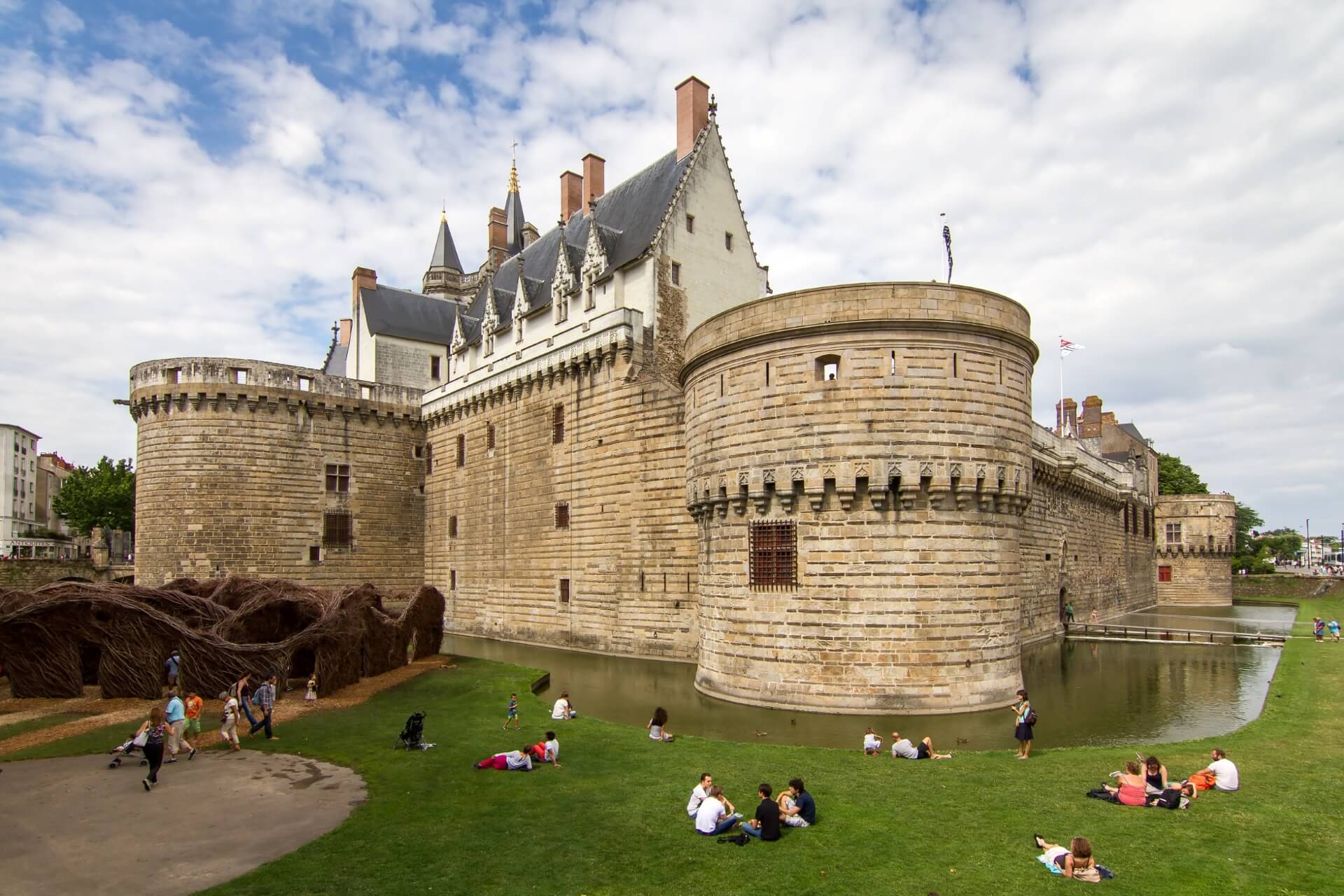
This fortress was built in the 13th century by Duke of Brittany Guy de Thouars to protect against the warlike Normans. At the same time, he seized part of the estate of Bishop Geoffrey. The case was considered in the royal court, and while the usual red tape dragged on, Guy de Thouars dug a rectangular moat and laid the foundation of the tower.
The first fortress consisted of a single tower surrounded by a wall. As soon as the rooms were ready to live in, the duke’s family moved to the new residence. Then the descendants of Guy de Thouars built the fortress to their own taste: towers were added, integrated into the fortress wall, a drawbridge was built, and a large palace was erected. Comfort and the defensive significance of the structure were taken into account: the Duchy of Brittany remained isolated.
Not only did the men who owned the chateau care about its fortification: Anne of Brittany and her daughter Clotilde, becoming queens of France, did much to make the family residence prosper. In the mid-16th century, the fortress temporarily became a royal residence. This influenced the fate of the chateau during the French Revolution: the insurgents proposed that the city buy the looted palace. But the municipality did not have such an amount, so the people turned the fortress into a prison for the nobility and royalists.
In 1800, a gunpowder warehouse exploded in the fortress: the buildings were destroyed or damaged. Restoration work was carried out, and then the city bought the residence. An exhibition of decorative and applied arts was opened in the restored rooms. World War II spared the fortress. But it was abandoned for a long time, so the buildings became dilapidated. Reconstruction began only at the end of the 20th century. Today, guests are offered permanent and thematic exhibitions. You can simply walk around the territory and bypass the fortress along the top of the wall.
Châteaudun
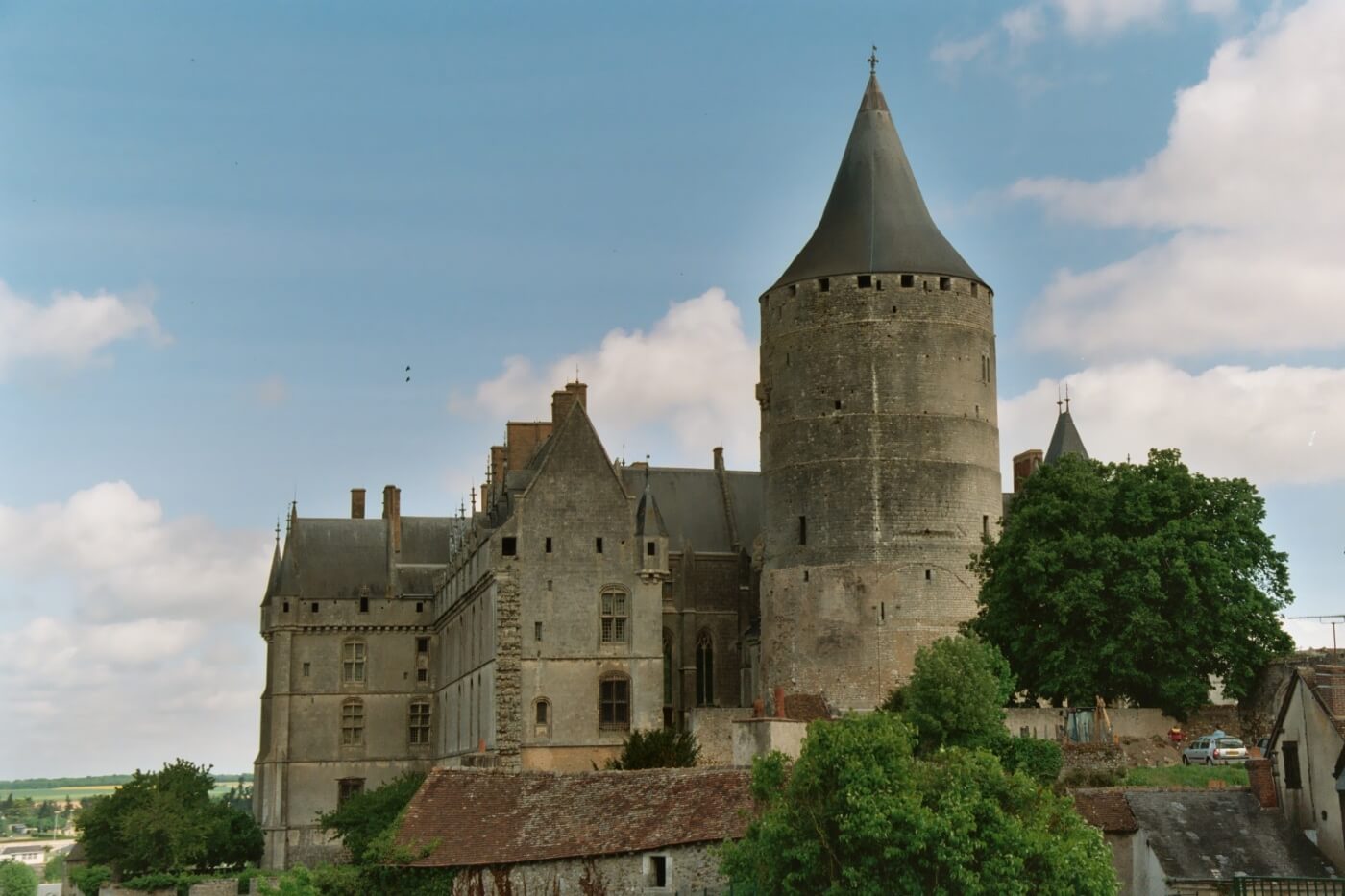
The first tower of the fortress was built in the 12th century by Count of Blois Thibaut V. The purpose was usual: to protect the possessions from Norman attacks. Châteaudun is the strongest fortification on the Loire River. The keep is a residential building and a fortification at the same time. Next to it is a chapel protected by a fortress wall.
Much was done for the construction of Châteaudun by its most famous owner: the Bastard Jean de Dunois, a companion of Joan of Arc. The illegitimate son of the count was raised together with the future King of France Charles VII. He was entrusted with redeeming Charles of Orleans from English captivity. For successfully completing the task, the Bastard received Châteaudun. By his order, the western wing was built.
In the late 15th century, François of Orleans-Longueville built the northern wing of the fortress. The style of the building combines Renaissance traditions and Gothic canons. During the French Revolution, Châteaudun was looted by insurgents, and later the fortress was turned into barracks. Since 1938, the fortress has belonged to the state. Today, Châteaudun is open to tourists. Guests are offered to see the 18th-century interiors, ceramics exhibition, and chapel frescoes. The jewel of Châteaudun is the collection of tapestries from the county of Alençon.
Montoire
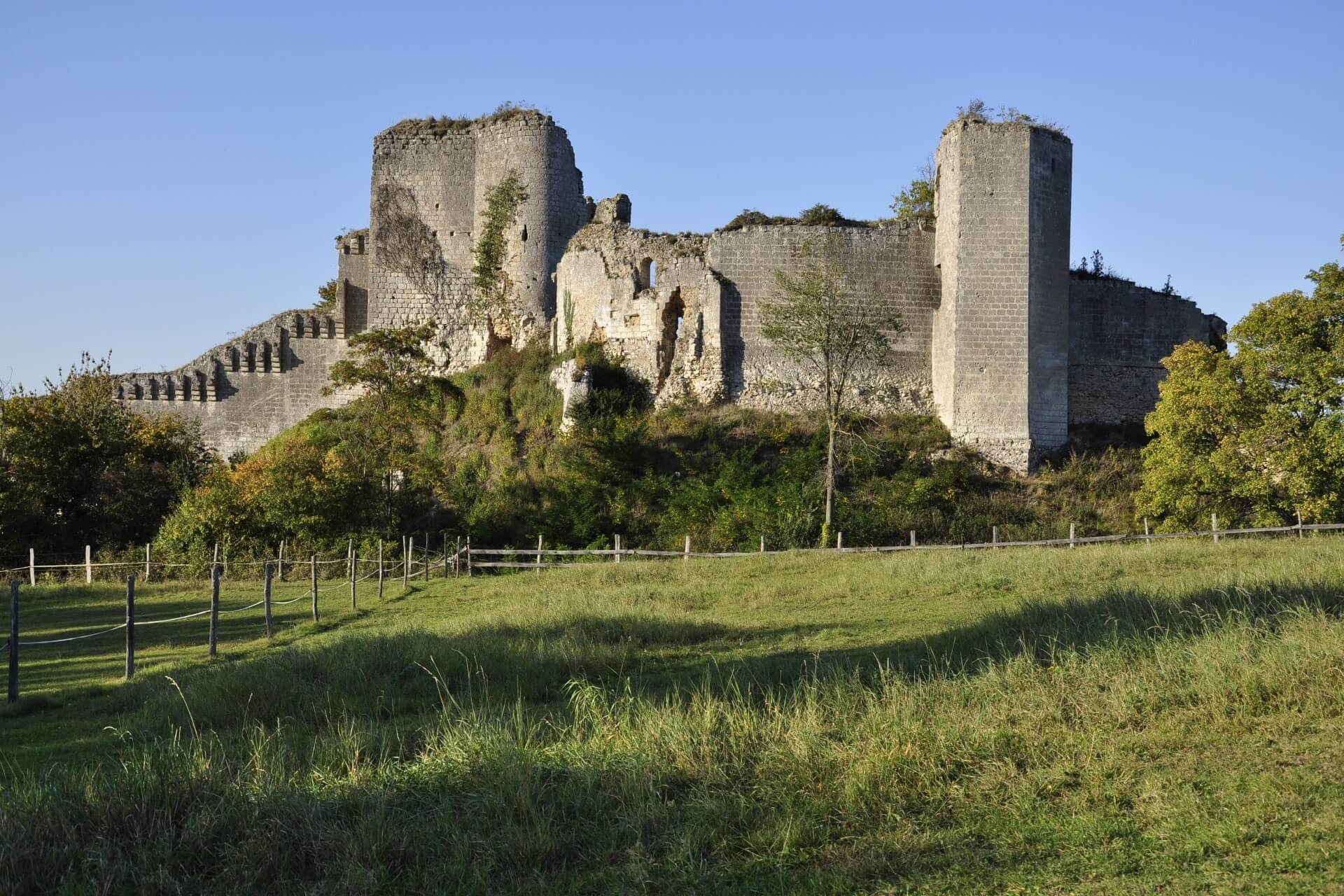
The Château de Montoire was built in the 11th century by the Montoire family. The successful geopolitical position of the fortress led to an ongoing struggle between the Montoire and Lavardin families for the estate. In the 12th-14th centuries, the fortress was rebuilt. Now the fortress belongs to the commune of Montoire-sur-le-Loir, but only picturesque ruins remain. The Château de Montoire is a cultural monument, and tourists can visit it freely.
Lude
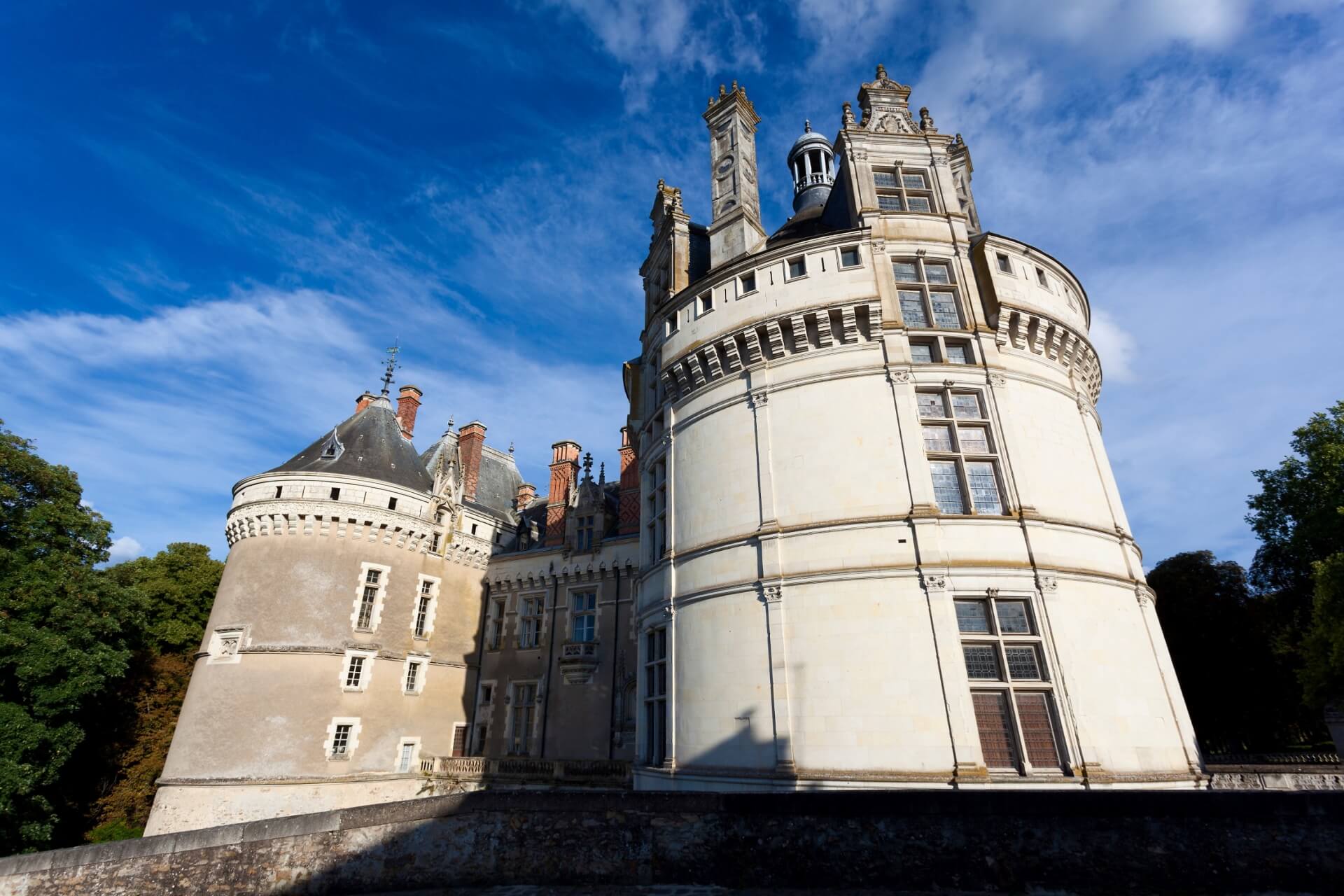
The first owners of Lude were the Dukes of Anjou. They built a wooden fortress to resist Norman warriors. But soon the structure was replaced with a stone one. However, once the fortress surrendered to the English. It was returned to France by Marshal Gilles de Rais, to whom the king gave Lude. However, the disgraced military man’s chateau was soon confiscated.
In the late 15th century, Jean de Daillon bought Lude. He was wealthy enough to rebuild the fortress to his taste. And most of all, Jean loved fun and entertainment. This period, lasting nearly 100 years, saw the count and his descendants decorating the fort, turning it into a real palace. Around it, a garden and park were created, where exotic flowers bloomed and exotic plants grew.
In the 18th century, Lude belonged to the Vievil family. The owners of the East India Company had enough funds to make the residence luxurious. A bas-relief was created in place of the moat, and a garden was laid out around the palace. During the French Revolution, Lude’s garrison could not resist the insurgents, and the fortress was captured, looted, and destroyed. But in the mid-19th century, the chateau returned to the Vievil family. Reconstruction began. Now the estate welcomes tourists and holds garden and park art festivals.
Angers
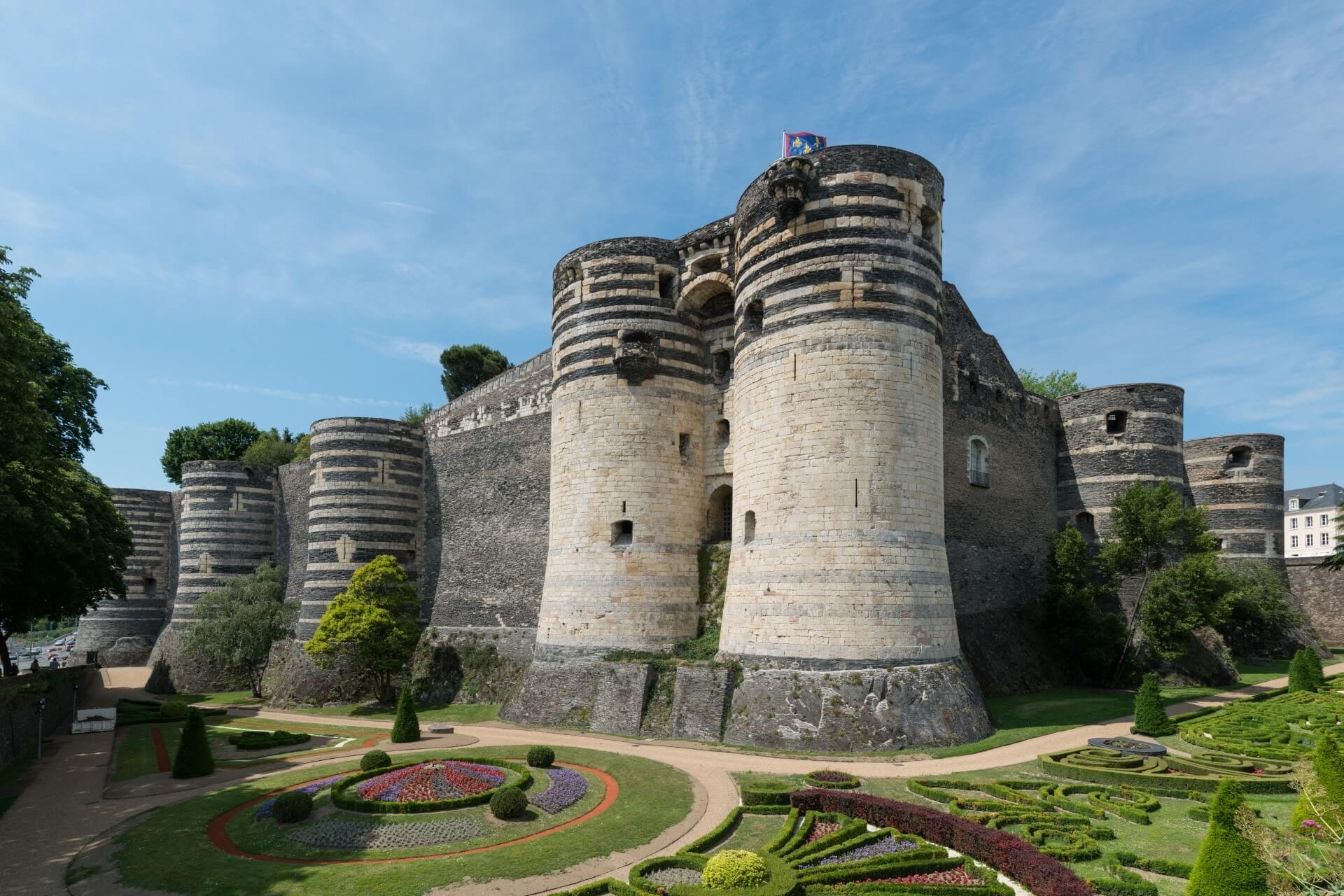
The first fortification was built in the 9th century on the high bank of the Maine River by the Duke of Anjou, Fulk III. The purpose was standard: to protect against aggressive Normans. However, an impregnable fortification was built on this site by Louis IX the Saint. The walls are 50 meters high and unite 17 towers. Few dared to storm such a fort.
But behind the impregnable walls were elegant palaces where the Dukes of Anjou led a luxurious life. Tournaments were regularly held here, animals were kept in the menagerie, and the territory was adorned with a park. Next to the palace was a vegetable garden where vegetables were grown for the ducal table, and beds for medicinal and aromatic plants were dug.
In the 16th century, by order of Henry II, an attempt was made to destroy Angers. However, only the height of all 17 towers was reduced. Such a change was beneficial: after connecting the towers with a gallery with cannons, the fort became absolutely impregnable. The fortress stood on the high bank of the Maine River, and on the remaining sides, it was protected by an artificially dug canal, making it impossible to approach the walls by land. Access inside was only possible through a drawbridge.
Today Angers is open to tourists. In the dry moat, a reconstruction of a medieval knight’s camp is set up. Visitors can see tents, touch weapons, climb the wall, and view the city’s surroundings. The territory is well-maintained: a garden, an apothecary’s garden, and a vineyard are laid out. Exhibits are housed in the palace.
Ainay-le-Vieil
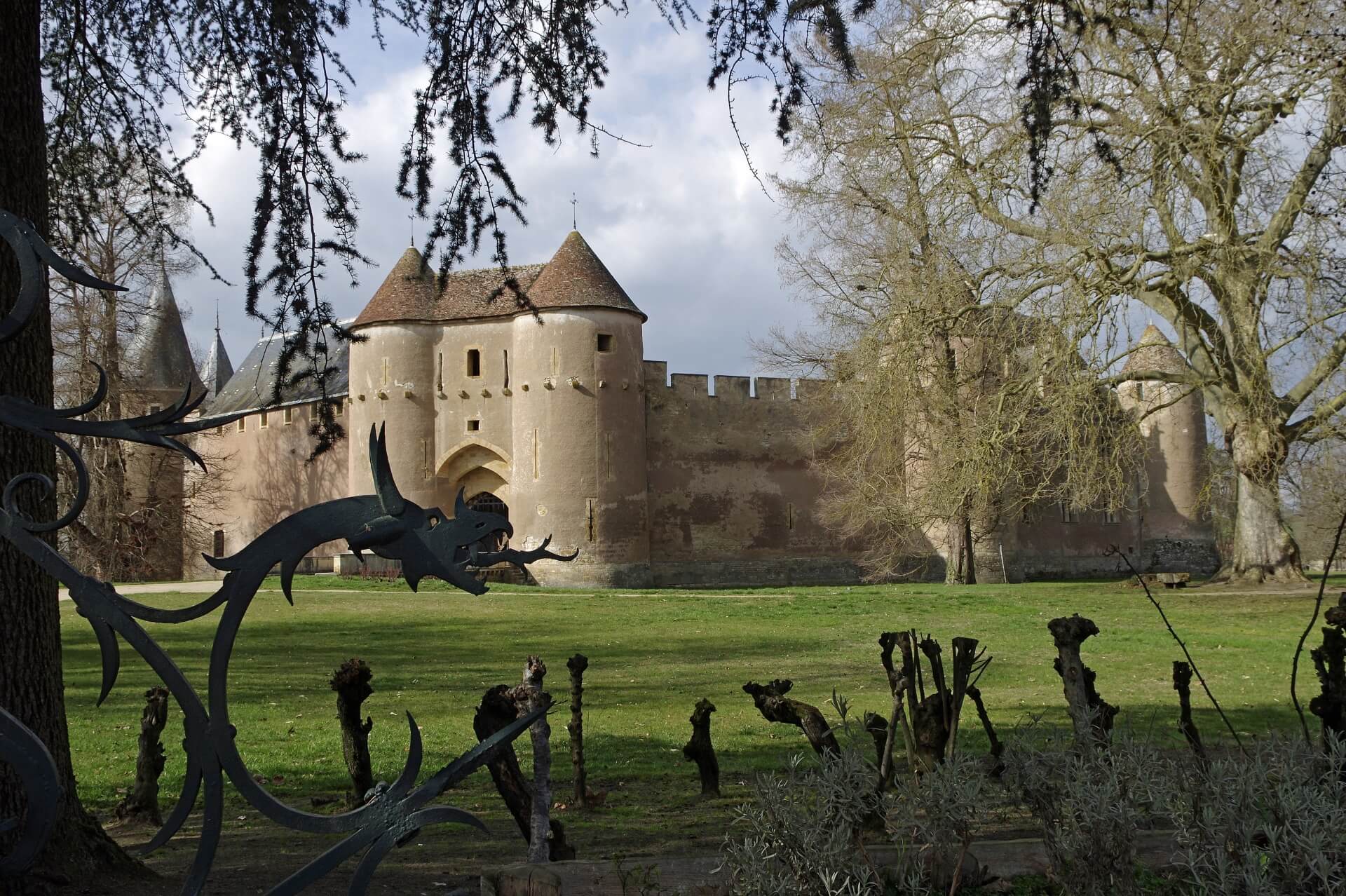
Ainay-le-Vieil is a private estate that has the status of a private historical monument. Besides, the surrounding park has received the status of a Remarkable Garden, awarded by the French government to the best ensembles. The fort had important defensive functions: it blocked the path of the Dukes of Aquitaine, who held an alliance with England. Ainay-le-Vieil was built on the plain, so it had two lines of fortifications. Currently, the outer boundaries are destroyed.
During the Hundred Years’ War, the fortress was never taken by storm, and the garrison withstood sieges and long attacks. Today, part of the premises is used for the permanent residence of the owners. The rest has original interiors and is accessible to tourists. In the royal hall, everything remains unchanged since the royal couple stayed in the palace. Only the monograms L and A (Louis and Anne) and the emblems of the royal couple—lilies and ermines—have been added.
Valençay
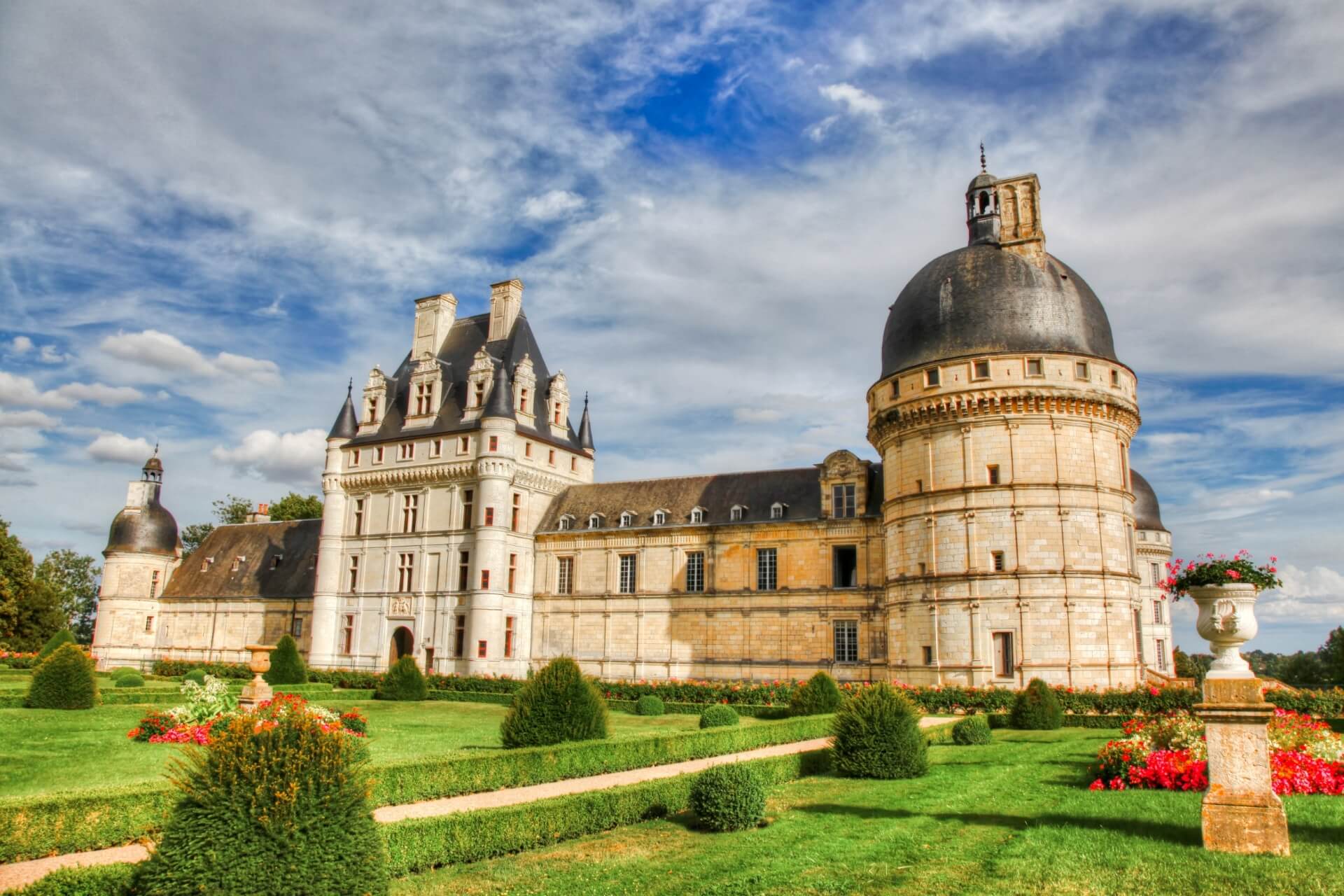
The first building on the site of modern Valençay appeared in the 10th-11th centuries. It was an unassuming lonely tower. In the 13th century, Sir Gaultier de Valençay built a small fortress around it. But as part of a dowry, Valençay became the property of the Chalon-Tonnerre family, who completed the buildings inside the fortress. At this time, the Guards’ Hall was built, connected to the fortress walls by an underground passage.
In the 15th century, the d’Estampes family rebuilt the estate: a gallery was erected, and work began on the palace. The architecture has characteristic features of the Chambord chateau. By the early 19th century, Valençay was a rich and luxurious estate. Its last owner sold the estate to Talleyrand. The Napoleonic minister lacked funds, so part of the sum was paid by Bonaparte himself. Talleyrand made Valençay what it is seen by tourists today.
Notably, Spanish princes served their honorary arrest in the estate. To entertain the prisoners, Napoleon suggested Talleyrand organize a theater. In 1810, the actors gave their first performance. For a quarter of a century, all the noble persons of Europe sought an invitation to luxurious Valençay. After Talleyrand’s death, the chateau was inherited by his distant relative, who received the title of Duke of Valençay. Since 1980, the estate has belonged to the state. The department monitors the condition of the complex and carries out restoration work.
Champigny
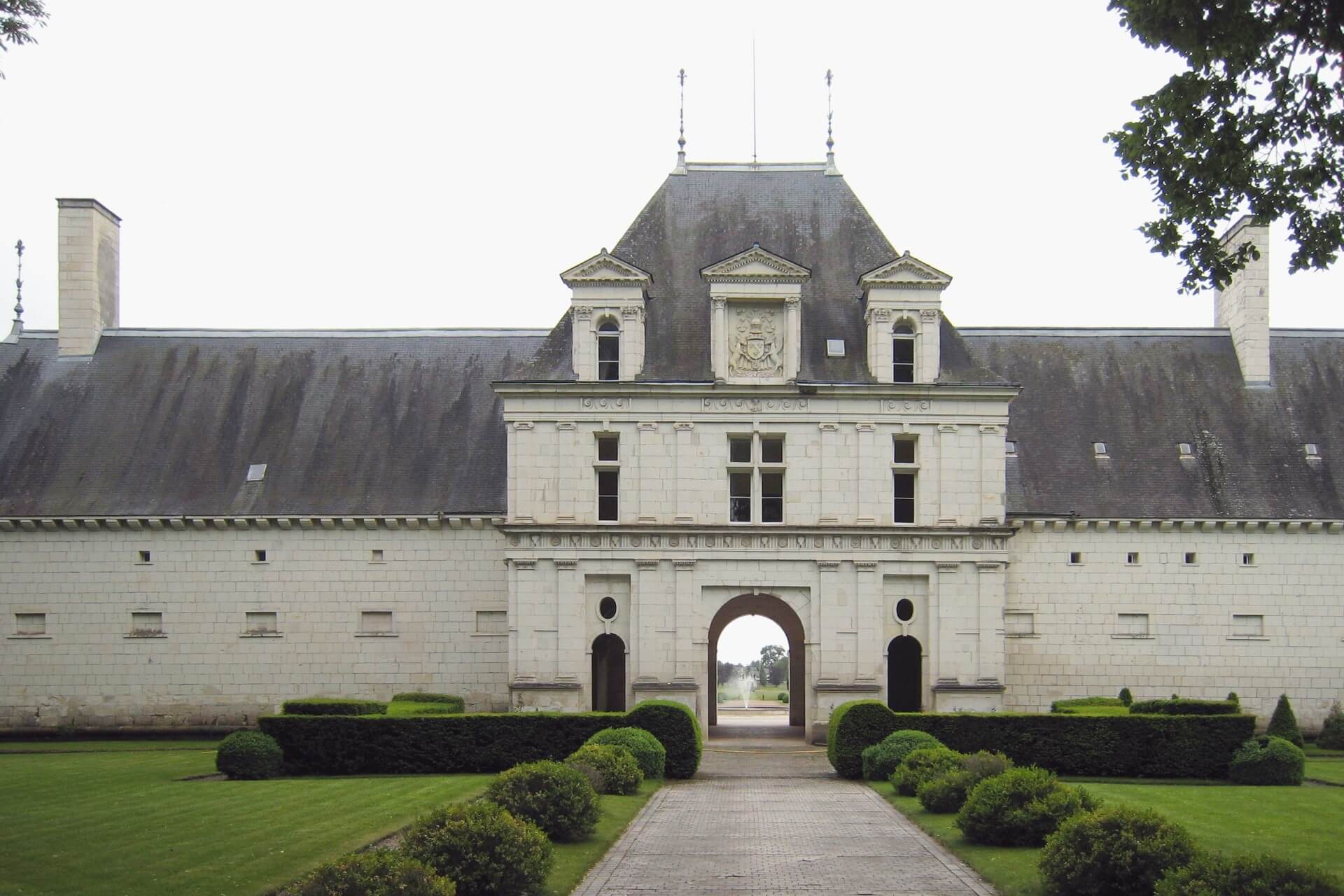
The fortress was built in the 12th century by knight Bouquet. Subsequently, it became the property of the Dukes of Orléans. In the 17th century, the estate was acquired by Cardinal Richelieu under a trade agreement. The new owner began to demolish all existing buildings, leaving only the Pavilion of Jupiter untouched. Richelieu planned to destroy the chapel, but the Pope prevented the vandalism. Three decades later, the Duchess of Orléans won the trial and received the ruined estate and monetary compensation, which she used to create a park.
The 20th century, unfortunately, brought new troubles: Champigny was bought by a Japanese company. Mismanagement led to the loss of part of the architectural elements and interiors. The 21st century was more fortunate for Champigny: it was acquired by an American family, who have already restored part of the premises and placed an exhibition in the halls. Restoration work continues, but tourists are offered to inspect the reconstructed part of the building and the exhibition.
Montreuil-Bellay
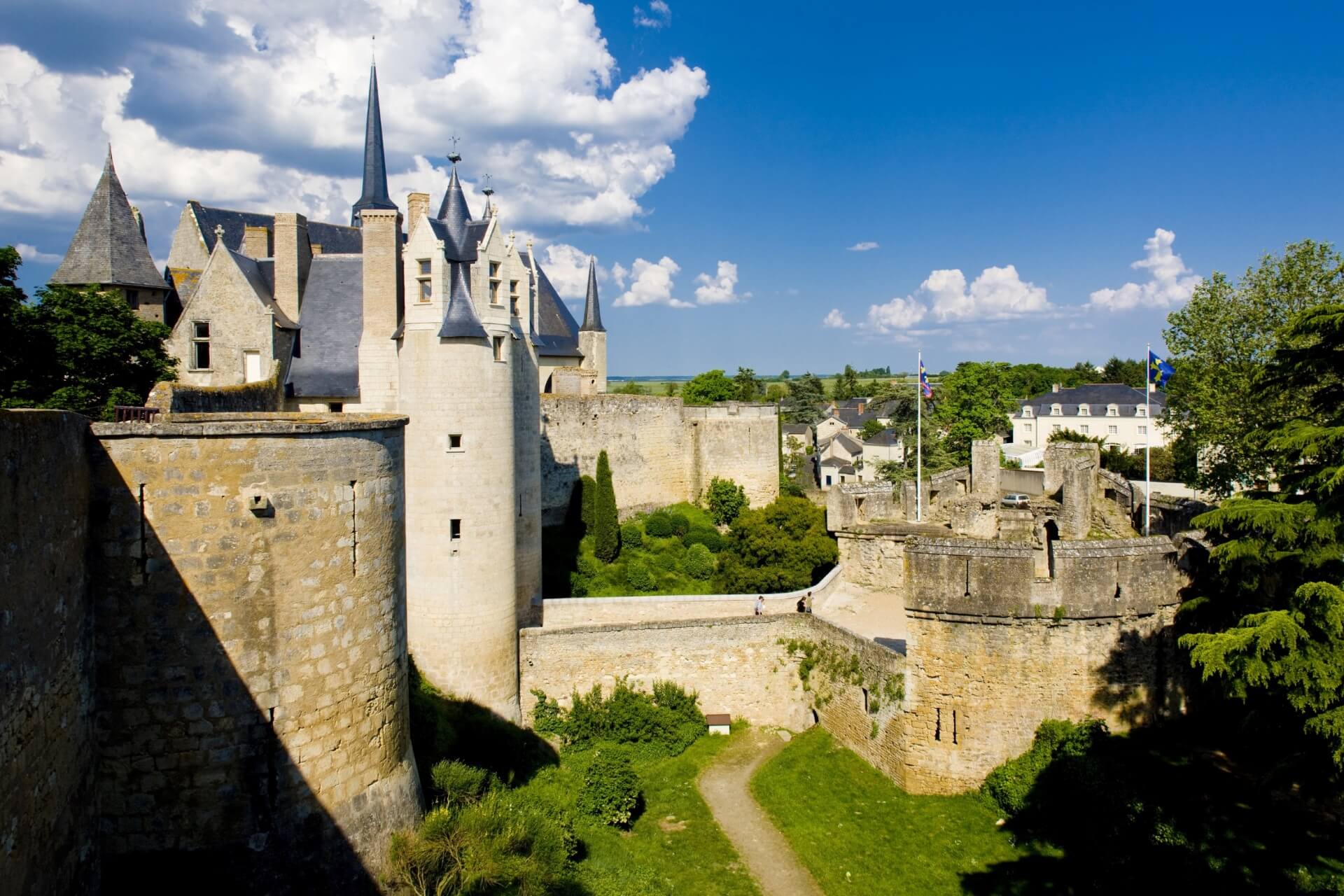
The fortress was founded by Fulk III of Anjou in the 11th century and soon transferred to his vassal, du Bellay. Since then, the chateau has been named after the knight: Montreuil-Bellay. The fortress had an underground passage that allowed communication with La Mot-Bourbon. Unfortunately, the galleries are ruined. In the 14th century, the owners turned the chateau into an impregnable citadel, and in the 15th century, it was rebuilt according to Renaissance traditions. During this period, the Château-Neuf (new castle) was built, and old and new rooms were added.
During the religious wars, Montreuil-Bellay was besieged but repelled all attacks. The fortress’s owners supplied food to both warring sides. During the French Revolution, royalist women prisoners were held here, and during World War II, a hospital was established. Since 1979, Montreuil-Bellay has been a cultural monument of France. An exhibition is open here, with the jewel being the Crucifixion fresco. Its author is a student of da Vinci.

